The Lawmatics Blog
Insights on legal marketing, automating the law practice, and legal tech in general
About the session
Behind every great client experience is a system quietly keeping things on track. The newest automation updates in Lawmatics build on that foundation, making it even easier to build and manage their automated workflows.
In this session, Devon Butler and Clare Struzzi walk step-by-step through what’s new. They cover trigger-based automations, appointment workflows, shared entry rules, and a simple way to organize everything in folders. Together, these improvements give firms even more control, flexibility, and time back in their day.
Webinar slide deck
When it comes to law firm marketing, I can’t think of a more competitive area of law than personal injury. To succeed in your area, you need to stay top-of-mind and differentiate from your competitors. For too long, many firms have relied on non-specific ads like TV commercials and billboards, but the rise of digital marketing has led to a necessary diversification of advertising methods.We need to start with a marketing strategy that focuses on trackable channels. Non-specific ads like TV commercials and billboards are no longer enough to stand out in today's digital world. By leveraging the power of digital marketing and tracking your efforts, you can be certain your marketing budget is well worth the investment.
Digital v. non-digital marketing
Traditional marketing methods like billboards and TV ads can effectively reach a broad audience and build brand awareness for law firms. However, it’s hard to track the success of these mediums.Digital marketing, on the other hand, allows law firms to target specific audiences and track engagement with their marketing campaigns using tools like search engines, social media, and online directories. Different digital marketing channels have their own benefits and drawbacks. Search Engine Optimization (SEO) helps law firms rank higher in search engine results pages but requires ongoing effort and resources. Pay-per-click (PPC) advertising can drive targeted traffic to a law firm's website but can be expensive and needs constant monitoring. Social media marketing can help build a law firm's brand and attract followers, but managing it can be time-consuming.So you need to carefully evaluate your budget, resources, and priorities to decide which digital marketing channels best fit your firm. By diversifying marketing methods, law firms can maximize their visibility and reach, build a strong brand, and engage effectively with clients across various channels.
Marketing metrics for law firms
According to the 2023 Marketing Outlook For Law Firms report from CallRail, only 42% of firms base their marketing spend on attribution metrics provided by reporting tools. Shockingly 65% of respondents don’t know what metrics to track and measure.Let’s fix that.Law firms, like any business, need to measure the effectiveness of their marketing campaigns to know that their marketing spend generates a positive return on investment (ROI). Here are some specific metrics and formulas that law firms should review:
1Return on Investment (ROI)
Starting off strong, ROI is a metric that measures the financial return of your law firm's marketing investments. In other words, it tells you how much money you're making in revenue for every dollar spent on marketing. A positive ROI indicates that a law firm's marketing efforts generate revenue that exceeds the cost of the marketing investments.ROI = (Revenue Generated from Marketing - Marketing Investment) / Marketing Investment x 100%
2Return on Ad Spend (ROAS)
ROAS measures the revenue generated from a specific advertising campaign relative to the cost of the campaign. So instead of generally looking at ROI, you can look at the ROAS of just Facebook advertising or just Local Service Ads.ROAS = (Revenue Generated from Ad Campaign / Cost of Ad Campaign) x 100%
3Marketing Expense Ratio (MER)
MER is a metric that measures the efficiency of a law firm's marketing investments by comparing its total marketing expenses to its total revenue. The MER is used both to calculate budgets and to benchmark spend.When used to benchmark spend, the MER compares a business's actual marketing expenses to its revenue. This allows you to evaluate the efficiency of your marketing investments and identify areas where you may need to adjust your strategy to improve your return on investment (ROI).MER = (Total Marketing Expenses / Total Revenue) x 100%When used to calculate budgets, the MER is used to determine how much a business can spend on marketing activities based on its total revenue and the desired MER. By setting a target MER, you know that you are investing a reasonable amount in marketing relative to your total revenue and can allocate their marketing budget accordingly.Say you want to achieve a MER of 12% (which would be an average percentage for PI Firms looking to grow their business). To calculate your marketing budget, you can use the following formula:Marketing Budget = (MER / 100%) x Total Revenue
So, if your firm has a total revenue of $3,000,000, your marketing budget would be:
Marketing Budget: (12% / 100%) x $3,000,000 = $360,000
This means that a reasonable starting marketing budget would be $360,000 for various marketing activities over the course of a year to achieve a MER of 12%.
4Cost per lead (CPL)
This metric measures the cost of acquiring a new lead for the law firm. It’s calculated by dividing the total cost of a marketing campaign by the number of leads generated. The lower CPL, the more cost-effective a campaign is.CPL = Total Cost / Number of Leads
So, your PI law firm runs a marketing campaign that costs $7,777 and generates 111 leads. To calculate the cost per lead (CPL), we can use the following formula:
CPL = $7,777 / 111CPL = $70
This means that the law firm is spending $70 to acquire each new lead.
5Customer Acquisition Cost (CAC)
CAC is a metric that measures the cost of acquiring a new client. By tracking CAC, law firms can identify the most cost-effective marketing channels for acquiring new clients and adjust their marketing strategies accordingly.CAC = Total Marketing and Sales Costs / Number of New Clients Acquired
From our example above, out of those 111 leads, 9 become paying clients. You already know that the law firm's average revenue per client is $17,777. To calculate the customer acquisition cost (CAC), we can use the following formula:
CAC = ($7,777 + total sales costs) / 9CAC = ($7,777 + ($17,777 x 9)) / 9CAC = $18,518
This means that the law firm is spending $18,518 to acquire each new paying client.
6Lead-to-Client Conversion Rate
This metric measures the percentage of leads that ultimately convert into paying clients. By tracking this metric, law firms can identify areas for improvement in their sales process and lead nurturing efforts.Lead-to-client conversion rate = ( the number of clients / the number of leads ) x 100%
From our example above, when we spent $7,777, we received 111 leads and 9 paying clients.
To calculate the lead-to-client conversion rate, we can use the following formula:Lead-to-client conversion rate = (9 / 111) x 100%Lead-to-client conversion rate = 8.1%
This means the law firm converts 8.1% of its leads into paying clients.
By using these three metrics together, you can gain insights into the effectiveness of your marketing campaigns and make data-driven decisions to improve your marketing efforts and intake process.
7Cost Per Case (CPCase)
CPCase is a metric that measures the cost of acquiring a new case for the law firm. It can be calculated by multiplying the firm's average case settlement value by a percentage representing the desired marketing spend per case. For example, if the firm wants to spend 20% of the average case settlement value on marketing, the CPCase would be 20%.CPCase = Average Case Settlement Value x Percentage of Average Case Settlement Value Spent on Marketing
Let's say your personal injury law firm has an average case settlement value of $50,000. You want to spend 15% of the settlement value on marketing to acquire new cases. To calculate their CPCase, we use the formula above.
CPCase = $50,000 x 15% = $7,500
So the CPCase for this law firm is $7,500. This means that, on average, you can spend up to $7,500 on marketing to acquire a new case and still generate a positive ROI.
Want to know more about marketing metrics? Check out 10 Best Marketing Metrics: How to Measure Your Law Firm's Marketing Success | Lawmatics
Essential marketing strategies for PI law firms
Clients are not just looking for logical solutions to their legal problems but also emotional connections with their legal representation. Personal injury attorneys who focus messaging solely on financial compensation risk missing out on building a robust and loyal client base.So while providing factual information and demonstrating your firm's experience is important, connecting with potential clients on an emotional level is equally important.With that in mind, you’ll want to look for ways to incorporate emotional calls to action, personal connections, and intimate stories into your messaging. You can establish a deeper connection with your potential new clients and increase the likelihood of converting leads into clients.
Connect with a personal injury website
With so many people turning to the internet to search for information or legal services, law firms need to have a strong website. Or…just have a website. According to the 2022 ABA TECHREPORT, 39% of solos and 12% of firms with 2-9 lawyers do not have a firm website.That is wild!And while I don’t like to make a habit of assuming, I will assume that 100% of you personal injury folks do have a website, given the stiff competition in your area of practice.So you already know that your website is the best place to showcase your brand, messaging, and testimonials. You’ll need a well-designed website that is easy to navigate and provides a positive user experience that can help establish that credibility, build trust, and encourage potential clients to take action.Providing easy-to-use navigation on your homepage can also help visitors quickly find the information they need and lead them to the desired action, such as scheduling a consultation.Want to know more about websites? Read 7 Essential Web Pages Your Law Firm Website NeedsUse language that speaks to your target audience. Keep your messaging clear, concise, and easy to understand, and avoid legal jargon or technical terms that may confuse visitors. Make sure to include a strong call-to-action that encourages visitors to take the next step in the conversion process, such as filling out a contact form or scheduling a consultation. Your call to action should be prominent, easy to find, and communicate the benefit of taking action.To build trust and credibility with visitors, include photos or videos of you and your staff. People want to connect; they don’t want to call into a large, impersonal call-center law firm. Have these photos on the homepage so potential clients can see who they will be working with.Take this one step further and include video testimonials of successful clients for social proof. Client testimonial videos build trust with potential clients by showcasing the people behind your law firm and the positive experiences of your past clients.While videos and photos of people are so important for branding and differentiating, you do need to keep your website fast-loading– especially on mobile. According to a recent study by Unbounce, nearly 70% of consumers admit that page speed influences their likeliness to buy. Users will exit your website and go to the next search result if they are frustrated. To ensure fast loading speed, consider working with a technical SEO expert.
Create interesting content
As Google continues to prioritize helpful, relevant content, personal injury law firms can benefit from creating informative blog content that showcases their expertise, provides value to clients, and improves SEO.Choose Relevant Topics: When creating content, focus on topics your potential clients find helpful. What questions do they call in about? What are you discussing during your initial conversations with clients? From there, create educational content or how-to guides. Provide educational resources, like step-by-step instructions for filing a claim, explain routine forms, or provide general advice about keeping medical records.Connect Emotionally: It's not just about the technical legal knowledge you share but how you present it to your readers. Emotionally resonating with your target audience will create a strong connection that can help foster trust and loyalty. Share stories of clients you've helped, including their challenges and how your firm helped them achieve a successful outcome.Use Engaging Formats: It’s not just about writing long blogs anymore. Make your content engaging by including images, videos, infographics, and other visual aids to break up the text and make your content more appealing.Optimize for SEO: Your content needs to be optimized for search engines. While keywords and on-page signals aren’t the whole piece of the SEO pie, they certainly will aid your efforts. Balance the content when it comes to keywords. While you should write about your local community, “keyword stuffing” can negatively impact your ranking.
Generate local business listings
One of the most important aspects of local SEO is generating local citations (in marketing, citations mean business listings). Citations are mentions of your law firm on other websites, such as local directories or review sites, including your business name, address, phone number (NAP), and website URL. Business listings help search engines identify your law firm as a legitimate business in the area, which can boost your local search rankings. As they say, the devil’s in the details, so make certain that your NAP is consistent across all citations, as this is a ranking factor.
Claim and optimize your Google Business profile
Google Business Profile (formerly Google My Business (GMB) is a free tool that allows businesses to manage their online presence across Google, including Google Search and Google Maps. Make sure that your profile is complete, accurate, and up-to-date, including your NAP, website URL, and business hours. You should also add photos and videos to showcase your law firm and services.Use this checklist to see how your Google Business Profile stacks up: How to Optimize a Google Business Profile for Law Firms
Develop link-building strategies
This marketing strategy is not for the faint of heart or– in this instance, a small law firm that doesn’t have a dedicated marketing team or agency. Link building is the process of returning links from other websites to your own. It is one of the bigger parts of the SEO pie, and backlinks can improve your local search rankings.Developing link-building strategies involves contacting other websites and asking them to link to your law firm's website. Still, it’s not quite as straightforward as it seems. There’s an exchange at play here, and you need to offer something of value to websites that will link to you. Some of the common link building practices in the legal field are:
- Sponsor local events or scholarships
- Participate in local business directories
- Write guest blog posts
- Create local resources or other original content
- Build relationships with podcasters or local media outlets
- Utilize broken link building
Referral marketing
Referral marketing is a powerful way to grow a law firm's business. Word-of-mouth recommendations from satisfied clients can bring in new clients who are more likely to trust and hire the firm. Here are the top 5 best ways to get more referrals for a law firm:
Say thanks and ask for referrals from satisfied clients
When you end a matter with a client, take the time to thank them for their business. We all know they could have gone to a competitor, but they went with you. A few weeks or months after their matter is settled, you can ask former clients if they know anyone else who could benefit from your services.
Be a joiner and networker
A great way to connect with other attorneys, legal professionals, or other business owners is to join the bar association or online communities or attend networking events related to your interests. Engage with these groups by answering questions, offering advice, and sharing your expertise. Build relationships with these people and ask for referrals when appropriate.
Show off your expertise
Are you your region's leading expert on left-turn trucking incidents? Well, now is your time to shine. Become an expert in your area of law. Establish yourself as a thought leader by writing articles, publishing books, and speaking at conferences. By positioning yourself as an authority in your field, you can attract more referrals from people who need your expertise.
Get involved in your community and volunteer
You’ll naturally meet people in your community who will recognize your commitment to the community. Focus on causes and events that align with your values and interests, and be genuine in your interactions with others. When you volunteer, you not only get the opportunity to give back to your community, but you also have the chance to showcase your skills and expertise to others who may require legal services. People will want to work with someone who is engaged in helping the community as a whole.
Be a guest on talk shows, podcasts, and other media
Meet with influential people to reach wider audiences and build credibility. When people see you as a trusted authority in your field, they will be more likely to refer you to others. Share your valuable insights and practical advice, and use examples to illustrate your points. Be sure to spread the love and promote the show on your social media channels to encourage your followers to listen or watch.To learn more about referral marketing, check out: 22 Proven Ways to Get Law Firm Referrals in 2022
Use video to showcase your community
Using video to showcase your community is a fun and effective way to connect with your audience. It's time to throw out the old social media playbook and embrace the potential of newer platforms like TikTok and Youtube. While Facebook still has its place, some really interesting things are happening on these other platforms.You can highlight what makes your community unique by creating short, engaging videos. Whether it's your favorite coffee shop, the best sandwich in town, or the local charity event you're sponsoring, use these platforms to showcase what matters to you and your clients. You can even interview local business owners to give your audience a behind-the-scenes look at your community.Social media marketing is a powerful tool for law firms to build their brand and generate leads. By creating valuable and entertaining content, you can establish yourself as a trusted expert in your field and connect with potential clients. Get creative and enjoy your social media content - your audience will appreciate it!Need some inspiration? Check out 9 Attorney TikTok Accounts You Need To Follow For Marketing InspirationDon’t miss out on these 9 Must-Watch Attorney YouTube Channels to Draw Inspiration From
Invest in paid advertising
Paid media is the best way to target ads to users actively searching for legal services or who fit specific demographics, interests, and behaviors. As with other marketing tactics, you can diversify how you spend your ad dollars. Let’s review the main ways your law firm can drive more traffic to your website, increase brand awareness, and, ultimately, generate more leads and revenue.
Search Engine Advertising (PPC)
PPC ads are displayed close to the top of search engine results pages (SERPs). Advertisers bid on specific keywords and pay for each click their ad receives, thus the moniker pay-per-click. Start with a small budget and test your ads to see which keywords and ad copy generate the most clicks and conversions. From there, adjust your budget accordingly. Track and measure Click-through rates (CTR), conversion rates, cost per click (CPC), and return on investment (ROI).
Social media advertising
Social media ads show up within users' feeds. These ads target specific audiences based on demographics, interests, and behaviors. Consider your target audience and which social media platforms they use the most. Start with a small budget and test your ads to see which generates the most engagement and conversions. Measure and track Impressions, engagement rates, click-through rates (CTR), conversion rates, and return on investment (ROI).
Retargeting
Retargeting ads are displayed to users who have previously visited or engaged with your website. Retargeting can be used across various platforms, including search engines, social media, and display networks. Start with a small budget and test your ads to see which generates the most engagement and conversions. Track and measure Impressions, click-through rates (CTR), conversion rates, and return on investment (ROI).
Talkin’ bout lead generation
Lead generation, or "buying leads," is a marketing strategy that involves purchasing contact information (such as email addresses, phone numbers, and names) of individuals who have expressed interest in legal services related to personal injury cases.While lead generation can be effective for personal injury law firms to acquire new leads, it's important to note that not all of these leads are created equal. Some of the names may need to be qualified leads, meaning they may not have a genuine need for legal services. As a result, be cautious when buying leads and have your intake team thoroughly vet leads to ensure they are good cases to take on.One of the most effective paid lead generation channels is Google Local Service Ads (LSAs). These ads have been designed to operate on a pay-per-lead (PPL) model. LSAs are only available to law firms that first pass Google's screening process, which requires them to have a valid license to practice law in their state, a background check through a third-party agency (Pinkerton), and can confirm insurance coverage. LSAs appear at the top of the search engine results pages, pushing PPC, the local map, and organic searches farther down the page.For law firms, you may want to also look into well-known brands like Lawyers.com, FindLaw, Nolo, and Martindale-Avvo. The services these companies provide can vary, with some relying on SEO-driven traffic to their directory pages and others using pay-per-lead models. While these services are popular, they have drawbacks. Many leads are driven by a name search for a specific personal injury lawyer and then resold back to another personal injury law firm. So, make sure to ask a lot of questions when choosing lead generation services, as the economics of these companies can be poor.
Convert more leads with Lawmatics
Marketing is an essential aspect of running a successful personal injury law firm. The industry is highly competitive, and you need to execute a comprehensive marketing strategy that aligns with your business goals and tracks your performance. However, to truly maximize the potential of your marketing efforts, you need a CRM like Lawmatics.Lawmatics is specifically designed for law firms and can help you track your marketing ROI and lead-to-client conversion rate. By tracking these metrics, you can determine your marketing tactics' effectiveness and identify improvement areas.By segmenting and targeting your audience, you can deliver personalized content that resonates with potential clients and nurture your leads. The best part is you can automate communication, so balls are never dropped, and you can keep your lead-to-client conversion rate high.Don’t leave marketing money on the table. Get a demo today.
Building a strong sense of community within a law firm is more important than ever when creating a healthy work culture and promoting job satisfaction. As the legal industry continues to navigate the challenges of remote and hybrid work models, finding ways to connect and engage with team members regardless of physical location has become challenging for many law firms.Today, law firms need to create consistent remote work policies across the firm, re-evaluate their onboarding experience, empower staff with tech skills, encourage internal opportunities for growth, and facilitate connections between employees.That is a huge to-do list! So, in this article, we will explore practical tips that you can implement to create a healthy, happy law firm culture. All of these strategies are designed to foster teamwork, strengthen relationships, and cultivate a sense of camaraderie among your staff.
A hybrid approach to building connections across the firm
The hybrid work model, where employees have the flexibility to work remotely and in-office, has become increasingly prevalent in today's legal industry. Allowing law firms to leverage the advantages of in-person collaboration while offering employees more flexibility in managing their work-life balance.This model provides flexibility, allowing employees to get work done on a schedule that works for them. Offering this model to your employees can increase job satisfaction and give them better work-life integration, leading to higher productivity and employee retention.One interesting finding of the pandemic is that this model benefits and promotes diversity by enabling firms to tap into talent not only from different geographic locations but also to support employees of diverse backgrounds. According to a study by McKinsey, traditionally underrepresented groups demonstrated an even stronger preference for hybrid work.There are some cost-saving advantages to the hybrid work model. While some law firms and companies were locked into a commercial lease during the pandemic, maintaining a hybrid work model can ultimately reduce overhead expenses associated with office space if your firm chooses to downsize physical space or move the office to a less expensive part of town. Remote work will also reduce costs and time for employees who commute.There is no one-size-fits-all solution, and your firm must carefully consider the unique dynamics of your teams and workflows. There will be communication issues and challenges for employees to maintain visibility and navigate career opportunities. The first step to digging into your firm culture is identifying pain points across teams and developing a plan to address them. Involving stakeholders at all levels of the organization and fostering accountability can ensure that everyone is aligned toward a shared goal of creating a cohesive work environment.
How to create a healthy law firm culture
Creating a positive law firm culture is paramount for retaining employees, increasing productivity, and improving client satisfaction. You can create a work environment where everyone feels valued and invested in the firm's success.
1 Reduce hybrid disparity between staff & associates for greater firm harmony
The shift towards hybrid work environments for lawyers is a permanent fixture of the legal profession. While there are challenges associated with remote work, such as the need for technology and communication tools, the benefits of cost savings, flexible working arrangements, and improved work-life balance make it an attractive option for lawyers and law firms alike.
54% of law firms have a permanent hybrid workenvironment for lawyers
The 2022 Law Firm Leadership Survey found that 54% of law firms have a permanent hybrid work environment for lawyers, while only 35% have moved to a permanent hybrid work model for staff. About 40% of respondents said their staff was back full-time in the office, and about 14% said their lawyers were back part-time. The report underscores a clear disparity in requirements for lawyers and firm staff, although the hybrid work trend is moving upward.
2 Promote consistency and inclusivity through firm-wide policies
Establishing a well-defined hybrid working policy should set clear expectations for in-office attendance for both staff and associates/partners.A policy could include the following points:
- Work schedule: Clearly outline the expectations for remote and in-office work hours, including specific days or times when employees are expected to be present in the office and when they can work remotely.
- Communication protocols: Establish guidelines for communication channels, response times, and availability for employees, whether remote or in-office, to ensure effective collaboration.
- Task assignment and deadlines: Clarify how tasks and deadlines will be assigned and managed for all staff to ensure accountability and productivity.
- Equipment and technology: Specify the availability and usage of equipment, technology, and software needed for remote work, including any security measures or protocols.
- Attendance and time tracking: Define the requirements for attendance and time tracking for remote and in-office employees (tracking time doesn’t have to just be for billable work). Include any reporting or documentation needed.
- Performance evaluation: Address how performance evaluations and feedback will be conducted for all staff, ensuring consistency and fairness in the evaluation process.
- Policies on remote work eligibility and requests: Specify the eligibility criteria and process for requesting remote work, including any limitations, approvals, or considerations.
- Health and safety: Lay out guidelines for maintaining health and safety protocols in both remote and in-office work environments.
- Professional development and training: Address opportunities for professional development, learning new skills, and staff training.
- Employee support: Provide information for staff to seek support for challenges they face, like mental-health challenges, while working in a hybrid work environment.
Firm managers can use this policy to manage or enforce any issues with employees when it comes to performance.
3 Rejuvenate your onboarding experience
When looking at your firm culture, one of the easiest lifts is to revamp your onboarding experience. All new employees will join the team and opt in to the new culture. They can become advocates for change at your firm.The first impression matters. So look to create a warm and inclusive environment for new employees to feel welcomed and valued. Have existing team members reach out, set up meetings to provide a comprehensive introduction to the firm's culture, values, and mission, and offer opportunities for new employees to socialize and build relationships with their colleagues.Invest in a comprehensive orientation and training program for new employees. This can include providing an overview of the firm's history, structure, key personnel, and specific training related to the employee's role and responsibilities. While administrative tasks like paperwork and training modules can overwhelm new employees, you can give new employees ample time to complete their onboarding. Offer opportunities for skill development, such as workshops, webinars, and mentoring programs, to help new employees quickly build their skills and confidence.Onboarding is not a one-time event. Follow up with new employees regularly to check in on their progress, address any concerns or questions they may have, and provide ongoing support. You can show your support and value to the new staff throughout their initial period at the firm and allow them to integrate into its culture and team dynamics.
4 Bridge the age gap and technology challenges in the workplace
In today's law firms, it's common to see a diverse workforce spanning across different generations, from Baby Boomers to Generation Z, resulting in what's known as "Boomer-to-Zoomer" offices. However, this age diversity can sometimes lead to challenges in implementing digital tools and navigating a hybrid work environment, especially for those who may not be considered "digital natives."Law firms must prioritize diversity and inclusivity by creating an environment that values input from all generations. One approach is to establish open communication channels where staff of all ages and tech skill levels can freely express their concerns or questions regarding technology. Mentorship opportunities can also be effective, where younger staff members can support their older counterparts in building their tech skills, and vice versa in areas where older staff excel, such as legal expertise and client management.Law firms need to recognize that staff of all ages and tech skills can successfully adapt to and embrace technological advancements with the right training and support. Providing adequate training programs and ongoing support can help employees gain confidence in using digital tools and contribute to the firm's overall efficiency and success.
5 Encourage opportunities for professional growth
In order to support the professional growth of their legal staff, law firms of all sizes can implement strategies like providing opportunities for learning and development, such as attending conferences or workshops or offering structured training programs that enhance professional skills and knowledge. Investing in the continuous development of your legal talent, you will ensure that your staff is equipped with the latest industry trends and best practices.By identifying talent from within the organization and promoting from within, law firms can save on recruitment costs and ensure that the individual is already familiar with the firm’s processes and values. This allows staff to quickly adapt and make a meaningful impact in their new roles. Promoting internally builds firm loyalty, as employees are more likely to remain committed and motivated when they see opportunities for growth within the organization.Another important aspect of professional growth in law firms is providing regular performance evaluations and constructive feedback to associates. Performance evaluations can help associates understand their strengths and areas for improvement, while constructive feedback can guide them in making necessary adjustments to their work. Law firms can support their associates' professional growth and development, leading to improved performance and career advancement opportunities.Overall, creating a culture that encourages and supports professional growth is essential for law firms to attract, retain, and develop top talent, ultimately benefiting the firm and its clients.
6 Build a collaborative workplace by connecting employees
You can’t have a community without connection. So here are three ways your law firm can cultivate community.
Mentoring programs
Mentoring programs have become increasingly important in law firms as remote work has become the norm during the Covid-19 pandemic. With the disappearance of the in-person office environment and the "open door" policy, employees may feel isolated, and managers may struggle to monitor team performance and engagement levels.Mentoring provides dedicated times for senior staff to connect with younger staff members and offer support, guidance, and advice. These sessions can cover career goals, industry outlooks, or just chatting. Mentoring also allows for deeper relationships among team members, promoting better communication and understanding.Mentoring programs can also create reasons for employees to enter the office in a hybrid work environment. By scheduling mentoring sessions, practice depositions, case reviews, and other activities that require physical attendance, managers can incentivize staff to come into the office, boosting morale and maintaining continuity among teams. These activities also allow employees to gain hands-on experience and further develop their skills.
Coffee chats
Setting up a structure to encourage coffee chats between all staff members across departments in a law firm can be a simple way to create a community.Designate a specific time during the workweek, such as a Friday morning or a break, when staff members are encouraged to take a coffee break and engage in informal conversations. These conversations can be in-person or done remotely. They should be viewed as a non-mandatory opportunity for employees to connect and socialize.Encourage and promote an inclusive culture where all staff members feel welcome to participate in coffee chats regardless of their position or seniority within the firm. Leadership can model inclusive behavior by getting involved, reinforcing the importance of building relationships with colleagues, and recognizing and celebrating diversity among staff members.Meeting someone or striking up conversations with acquaintances is always a little awkward. So, provide prompts or starters to help staff members initiate conversations during coffee chats. This can include suggested topics or questions related to work or personal interests. It's important to create an environment where staff members feel comfortable sharing and listening to each other's perspectives.
Prioritizing 1:1s
Organizations can prioritize 1:1s by implementing regularly scheduled employee development meetings (EDM) that allow managers to review employee performance and support their personal and professional goals. 1:1 meetings can be in-person or on video conference, allowing employees to share successes, discuss issues, and receive feedback.A well-defined agenda for 1:1 meetings between managers and employees is crucial for maintaining focus and productivity, facilitating preparation and engagement, promoting accountability and follow-up, and ensuring equality and transparency.The agenda typically includes the following:
- a check-in
- goal progress review
- development opportunities discussion
- performance feedback
- career development exploration
- addressing questions or concerns
- summarizing action items
Consistent use of an agenda sets the tone for effective and purposeful meetings, fostering a positive working relationship and driving mutual understanding, development, and performance improvement.Monitoring employee performance involves assessing output and paying attention to the working environment and employee attitudes. Employers should look out for subtle signs of struggle or disengagement, such as slow completion rates or changes in attitude, and address any potential issues.Checking in on employees regularly and showing empathy toward their challenges is important as demonstrating care and compassion. Like all other types of businesses, law firms should also encourage setting boundaries between personal and professional life to promote a healthy work-life balance and minimize burnout.
Nurturing a culture of success: key considerations for law firms in remote work
Building a healthy culture within a law firm is essential for creating a positive work environment, fostering camaraderie among employees, and achieving overall success. To make remote working environments more personable, law firms should strive to meet their staff members where they are. Acknowledging that not everyone's work experiences will be the same and offering suitable advice and resources to cater to individual needs. Law firms should also consider ways to make remote offices feel more homely, such as organizing virtual coffee breaks or social activities.Tapping into existing employees for talent development is crucial for fostering growth and accountability within the firm while saving on hiring costs. Firms can offer additional training courses, grant access to learning resources, and implement performance-based incentives or rewards to motivate employees to reach their goals. Regular feedback and communication can help identify areas of improvement and plan for future promotions or hires, ensuring that all team members feel supported and valued.
Instagram is an underutilized platform for law firm marketing automation. Still, it can be a powerful tool for increasing brand visibility and reaching new clients. On Instagram, attorneys can create authentic posts about their firms, create targeted campaigns to engage with their audience and use photography and video to strengthen their law firm's brand identity.Even though Instagram is mostly used for personal purposes, attorneys are now building communities and using digital marketing for law firms to reach their target audience. With its captivating format of photos and videos, Instagram's highly-visual nature draws in almost 1.5 billion users worldwide.
Can lawyers have social media?
Yes, lawyers can have social media. In fact, Attorneys and law firms are no strangers to social media marketing, with the majority of them having some form of an online presence. According to the 2020 TechReport by the American Bar Association, 81% of law firms and 77% of individual lawyers participate on at least one social media platform for professional purposes.
Do attorneys use Instagram?
Attorneys and law firms are no strangers to social media marketing, with the majority of them having some form of an online presence. According to the 2020 TechReport by the American Bar Association, 81% of law firms and 77% of individual lawyers participate on at least one social media platform for professional purposes. While LinkedIn remains the leading platform for lawyers and law firms, Instagram has yet to gain much traction, with only 12-13% of lawyers of various sizes reporting its use.Transactional law firms, such as those specializing in estate planning and immigration, have a unique opportunity to educate potential new clients. Additionally, family law firms should consider investing in marketing on Instagram due to the platform's demographics. 56% of Instagram users are between the ages of 25-54, and research shows that Instagram audiences are from slightly higher-income homes.So, there's a lot of room to grow and innovate on the platform. While many law firms have yet to tap into Instagram's full potential, those that do can gain a significant competitive advantage.
How do Lawyers use Instagram?
Having a presence on Instagram allows attorneys to stay up-to-date with clients, colleagues, and industry professionals. Law firms can leverage Instagram to increase potential new clients by staying on top of the mind of their followers.Instagram is a highly visual platform that allows users to share photos and videos with their followers. When considering adopting this platform, law firms should leverage Instagram to showcase their expertise and professionalism through visual content such as graphics, infographics, and videos. Firms should also create posts highlighting their team members, their office space, and their community involvement.To start with Instagram marketing, law firms should create a business profile on the platform and optimize it for their brand. They should then develop a content strategy that aligns with their goals and target audience. Ultimately, law firms should aim to create content that informs, educates, and entertains their followers. Law firms should also use Instagram features such as stories and videos to engage with their followers. By leveraging these features, law firms can create a more personal connection with potential clients and build trust in their brand.As the profile grows with engagement, law firms should respond to comments and direct messages to foster trust between the followers and the brand.
What should a law firm post on Instagram?
Law firms should post content relevant to their practice and engage their audience. Here are some law firm content ideas that lawyers can use to market their services on Instagram:
- Educational content: Legal developments, tips for navigating the legal system, and links to blog posts and articles
- Case studies: Successful case outcomes and client success stories.
- Behind-the-scenes content: Daily work and office culture to humanize the brand and build stronger relationships with followers.
- Testimonials: Positive reviews and testimonials from satisfied clients to build trust and credibility.
- Promotions: Events, webinars, professional photos highlighting staff, an attorney, or the law firm, announcements about awards or recognitions
Leverage law firm Instagram content to build your brand
Keeping up with Instagram, let alone all your other marketing and legal work takes up significant time you probably don’t have. Let Lawmatics help. Lawyers can use Instagram to build their brand, engage with potential clients, and stay current on the latest legal industry developments.At Lawmatics, we understand the importance of efficient marketing for law firms, and that's why we've designed a CRM specifically for the legal industry. Our platform comes equipped with marketing automation features that track where your leads are coming from and provide reporting to assess the ROI of specific marketing channels. This helps you optimize your marketing efforts and get the most out of your time and resources. Book a demo today.
Where have all the associates gone? Based on numerous annual reports regarding the state of the legal industry, associate turnover has been a top pain point for attorneys in the past few years. Here is a sampling:
- A 2021 McKinsey study found that more than 50 percent of employers face lower-than-average employee retention rates. In November 2021, approximately 4.5 million U.S. workers decided to leave their places of employment.
- Major, Lindsey and Africa and Above the Law recently reported that a third of junior lawyers do not plan to stay with their law firms beyond five years. Moreover, many young lawyers don’t expect to spend their entire career in the same law firm, much less make partner.
- Thomson Reuters 2022 Report on the State of the Legal Market found that associate turnover is approaching 25 percent and predicted that firms could expect more than a 100 percent turnover among associates in the coming five years.
- White-collar jobs take an average of 68 business days to fill, and some take as long as four months, depending upon the level and salary range. A law firm’s lateral hiring process can take three to 12 months.
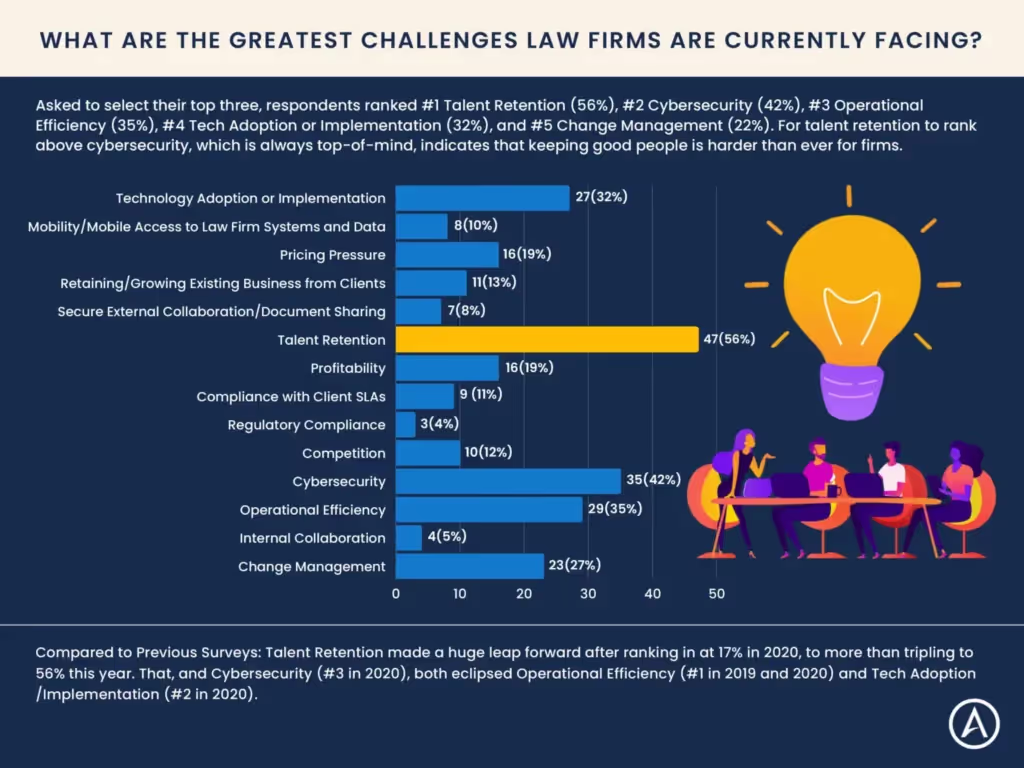
Source: https://www.attorneyatwork.com/law-firm-hiring-and-retention/
The real cost of associate attrition
According to a Society for Human Resource Management (SHRM) study, the average cost per new hire is almost $4,700. However, many employers estimate the total cost to hire a new employee can be three to four times the position's salary.When an associate quits, things get expensive quickly. Many actual and inopportune costs are absorbed by a business trying to fill an open position, and law firms are no different. Recruitment, posting, interviewing, onboarding, and training all take valuable time. In addition, there are soft costs: lost momentum, hiring replacement workers, and reassigning other employees to cover the responsibilities of the one who quits until you can fill the position.
According to a 2023 report from the New York Law Journal, there are basically seven stages to associate attrition:
- The pre-exit, checked-out stage
- The “they’re gone, nobody’s billing” stage
- The hunt to find a replacement stage
- The contagion of quitters stage
- The “we found someone; let’s hire them!” stage
- The new-hire training stage
- The post-training but not fully productive stage
Best-case scenario: When the replacement process moves quickly, and the outgoing employee doesn’t hang around too long, the cost to the firm is $651,654.12. But more commonly, when the role is slower to fill and the outgoing employee stays longer, the replacement cost could reach $951,093.62, according to the NYLJ.
The retention crisis in the legal industry
The legal industry survived the pandemic, has shown record profits, and most firms have more work than they can handle. Newly-minted attorneys who never dreamed of living in New York City are now netting Manhattan salaries without leaving Philadelphia or Denver. But despite these sunny statistics, associate turnover rates continue to hover near 25 percent.Although law firms frequently respond to staffing shortages by offering higher salaries and more attractive benefit packages, many have found that paying more for a lawyer might help get them in the door, but money alone is not a good retention strategy, nor does it help the firms’ bottom line. Moreover, these financial tactics are often unsustainable and fail to make associates feel appreciated, recognized, or involved in something meaningful to their life and career.A 2022 Thomson Reuters study found that compensation ranked as the fifth most important factor by lawyers who chose not to move to a new firm. The higher favorability factors included:
- Firm environment
- Relationships among co-workers
- Quality of work performed
- Flexible working practices
While more money certainly helps associates dig themselves out of law-school debt, absent an inclusive culture or focus on professional development, big salaries appear to be an ineffective solution to a more significant staffing problem.
How can firms attract and retain top talent?
Law firms must be adaptable and willing to invest in training and education programs for their lawyers, or risk losing them to competitors. To attract and retain talent, a law firm must:
- Provide platforms, support, training opportunities, and an environment where lawyers can meet and work together.
- Offer flexibility for the lawyers to find their own work-life balance. In addition, lawyers must take advantage of these programs and opportunities. Today’s lawyers want more flexibility regarding where they work from and when they get their work done.
- Look inward and decide what they can do to address the many factors progressive lawyers consider when deciding to join a new firm or stay where they are, and help them grow and develop their practice.
- Find and retain talented lawyers who perform high-level work, deliver it on time and on budget, and are engaged in the client-attorney relationship.
Winning the retention fight in a tight economy demands agility and strategic thinking. Firms must plan with deliberation, creativity, and care to create a strategy tailored to fit their organization and its employees.
Strategies to help keep associates in your firm
The Thomson Reuters report found that the loyalty lawyers feel toward their firms and their willingness to work hard “is not simply, or even primarily, driven by compensation.” So, how can a law firm unravel the associate retention quandary and encourage new lawyers to stick around? Here are 9 associate retention strategies:
1Provide professional development opportunities
Investing in professional development is the best way to engage associates and encourage them to stay. Law school does not provide instruction in leadership, client management, or the business of law. Providing workshops, seminars, and coaching programs are relatively inexpensive ways for firms to invest in their people. Becoming a successful lawyer requires developing soft skills like communication, teamwork, and problem-solving, and firms are uniquely positioned to provide associates with the tools to become future leaders.
2Inspire mentoring
Most associates benefit from an internal champion who supports them in their career pursuits. A mentor is a partner who volunteers time to help associates understand, identify, and support their personal and professional goals. A successful relationship will allow the associate to gain added confidence, become more focused, and feel supported within the firm. If younger lawyers feel like they have an advocate at the leadership level, they are more likely to invest in the firm, and the more invested they are, the more likely they will bring clients to the firm and the less likely they will be to leave.
3Develop a positive culture
Law firms shouldn’t underestimate the importance of a positive law firm culture. An organization’s culture is an indicator of its core values – respect, collaboration, and fairness should all be priorities. A positive law firm culture will encourage high-level thinking, which will translate into superior solutions for clients. Prospective clients can tell when a legal team works well together and when working conditions are not optimal. A positive law firm culture is beneficial for a firm, its clients, and its bottom line.
4Create a supportive environment
One way a firm can address high burnout, addiction, and suicide rates that plague the legal profession is to create a supportive and safe environment in which your professional staff can thrive. Everyone (including lawyers) wants to be part of a “tribe” – a group of people united by shared values, traditions, and goals. A sense of belonging accompanies being surrounded by others facing similar challenges, and lawyers need to feel this sense of camaraderie in their firms. For example, hosting regular lunches or sponsoring firm-wide volunteer activities allows lawyers and staff to bond as they give back to the community.
5Proactively address burnout
Research has shown that younger lawyers – millennials in particular – are dissatisfied with their work-life balance. This frustration is why many attorneys become no longer interested in a career with their current firm and plan to leave after three to five years. While attorney burnout can occur for many reasons, firms can and should implement systems to ensure that lawyers and staff aren’t being overworked. One way to accomplish this is to monitor the hours of individual attorneys and distribute workloads accordingly. For example, suppose one associate is billing 12 hours a day for an extended period, particularly over the weekend. In that case, you might need to assign another associate to a matter or reallocate some of their workload. Or, if a paralegal has worked three weekends in a row, it’s probably time to assign another paralegal to assist with the matter. Monitoring workloads and taking some of the burden off of attorneys and staff shows that you care, which employees notice.
6Offer growth opportunities
Helping attorneys and staff grow professionally is another way to boost employee retention. Constructive personalized feedback and positive encouragement are important for junior lawyers and new staff members to hear. Try to provide this feedback during one-on-one meetings (not waiting for often-dreaded end-of-year performance reviews) so that lawyers and staff will feel supported during their growth and believe that there’s a path forward for them in the firm. In addition, by offering structured mentorships between senior and junior lawyers, firm leaders can build a stronger sense of community.
7Encourage formal learning opportunities
Formal learning opportunities are also critical. Incorporate opportunities for continuing legal education (CLE) sessions and conferences in your learning and development budget. To encourage engagement, ask your team what they are most interested in learning about to give junior lawyers and other new employees the ability to shape their careers. If lawyers and staff feel they have a say in what they’re learning, they will be more willing to invest in their growth. More investment in learning leads to better work for your clients, and more happy clients mean more revenue for the firm.
8Boost communication
Open communication is critical for firms to retain their staff. Law firms must prioritize transparency so that lawyers and staff are empowered to communicate with firm management on numerous topics, including compensation, discrimination, workloads, and work-life balance. In addition, a culture of open communication will allow your legal team to share creative ideas for business development or innovative CLEs and conferences. However, communication is a two-way street - ensure that your firm follows through. Open communication without results is just lip service. If an employee is struggling, offer to help them. If an associate has a great idea, listen and help them implement it. If you want to know how your team is doing and what you can do to support them – ask.
9Encourage goal setting
Establishing personal or professional goals and developing plans to reach these objectives may be foreign to many lawyers. Young lawyers are typically accustomed to their firms setting their rates, billing requirements, expectations, and work responsibilities. However, one of the best ways for lawyers to take greater ownership of their roles as instruments of growth within the firm is to outline their own expectations and goals. Encourage associates to put their goals in writing and share them with supervisors and peers. Gathering support for meeting their own expectations – not just those of the law firm – and marking every milestone together can be highly motivating and boost retention.The current state of the legal marketplace supports the professional mobility of associate attorneys. However, earning a reputation as a firm that invests in lawyer and staff development by focusing on giving young attorneys what they need to reach their career goals can vastly improve your firm’s associate retention rate, enhance the health and well-being of your entire staff, and complement your recruiting efforts as well.
How leveraging legal technology helps retain associates
Pixels can’t replace people; however, technology must be integral to every modern law practice. If you and your firm aren’t pursuing ways to leverage cutting-edge legal technology, you’re likely trailing the competition, having difficulty recruiting talent, and experiencing retention issues.According to the 2022 Report on the State of the Legal Market by the Center on Ethics and the Legal Profession at Georgetown University Law Center and the Thomson Reuters Institute, leveraging technology is critical for firms that want to retain the best legal talent. When those surveyed were asked to name the chief benefit of their teams’ technological upgrades, 48 percent said efficiency. Still, many also experienced cost savings, improved data security, reduced risk, increased productivity, and better chances of favorable legal outcomes.In addition, 76 percent of those surveyed said that getting the right mix of talent is the most critical area that firms need to get right to meet growing business demands. Finally, the respondents cited having integrated technology and solution providers as essential next-generation investments their firms need to make, but also said that processes and technology will not improve outcomes without involving the right people.The increasing impact of technology is a trend that has impacted both legal departments and law firms across a wide range of areas. Today, more than ever, technology use factors into how well law firms attract and retain top talent and drive their performance. Technology also influences how associates select firms and, perhaps even more importantly, how long they decide to stay at a particular firm.Technology tops the list of legal trends in 2023 and beyond. According to a recent Wolters Kluwer Future Ready Lawyer Survey:
- Eighty-seven percent of corporate lawyers and 83 percent of law firm lawyers said it’s extremely or very important to work for an organization that fully leverages technology.
- Seventy-nine percent of the legal professionals surveyed said they consider the increasing importance of legal technology a top trend.
- Sixty-four percent of corporate attorneys and 63 percent of law firm lawyers planned to increase their investment in software to support legal work in the next 12 months.
- Just 36 percent of the attorneys surveyed believed their department was ready to recruit or retain technology staff. In law firms, only 33 percent of lawyers believed their firm was adequately prepared for these activities.
The survey indicated a marked increase in the number of firms revisiting who does the work and how it gets done. In addition, while legal departments report they are keeping more work in-house, both legal departments and law firms are maximizing different types of working arrangements – contract workers, alternative legal service providers (ALSPs), non-legal staff, and more self-service options for clients – opportunities that could positively impact work-life balance and associate retention.
Boost associate retention with Lawmatics, the #1 legal software for law firms & attorneys
Associates are demanding flexibility on many fronts, including better benefits, flexible schedules, and fewer hours. Of course, if associates put in fewer hours, they might enjoy their jobs more, perform at a higher level, and stay with a firm longer, but how will legal work be completed as efficiently as possible – while maintaining high quality? For many organizations, the answer is greater reliance on legal technology solutions.
“
“Lawmatics is the best legal technology software I have seen in ten years. When I evaluate software, I question whether our lives would be easier if a program could execute or manage a specific task. The team has gone a long want to make our wants and wishes a reality.”
— Christopher Gaddy, Nice Law Firm
Lawmatics legal practice management software will transform the way you run your practice. Our cloud-based platform will:
- Enable your team to stay organized across workflows
- Enhance real-time communication with secure portals
- Provide the tools necessary to manage tasks more efficiently.
What law firm doesn’t want to earn greater margins, tackle challenging new work, represent more profitable clients, and retain valuable talent? For more information on how the Lawmatics automation platform can help keep your legal team engaged, set up a demo today.
Legal marketing encompasses all the tasks related to driving new business to a law firm, including traditional marketing, digital advertising, relationship building with clients, potential clients, and industry peers, and other methods to grow a law firm’s brand.Because the legal landscape is continually changing and evolving, legal marketing efforts must keep up with the latest trends to remain competitive. To accomplish this, legal marketers must follow best practices and strategies for legal marketing, which include:
- Generating quality website content
- Optimizing the firm’s website for search engine optimization (SEO)
- Engaging with current and potential clients on social media platforms
- Making meaningful contributions to industry associations
- Using analytics to determine the success of marketing efforts
When done right, digital marketing for law firms can boost a practice’s reputation, enhance its customer base, and build new sources of revenue. In addition, utilizing law firm marketing automation will help streamline the process and make it as efficient and straightforward as possible.
What is a legal marketer?
A legal marketer manages and directs a law firm’s advertising and promotion, community involvement, charitable contributions, and sponsorships to improve, maintain, or develop the firm’s reputation. Law firm marketing jobs typically include the following duties:
- Public relations. Legal marketing consultants help project the firm’s image through relationships with clients, staff, vendors, and the media.Firm communications. Legal marketers manage databases to distribute newsletters, announcements, client surveys, and other promotions to past, current, and potential clients.
- Client relationships. Legal marketing specialists develop and evaluate client surveys to identify the strengths and weaknesses of their firms to gauge client satisfaction, concerns, and expectations.
- Referrals. Legal marketers are responsible for tracking referral sources of new business and maintaining positive relations with these sources.
- Firm branding. With the assistance of graphic designers and other marketing professionals, legal marketers maintain the firm’s internet presence through print materials, websites, and online directories.
- Outreach. Legal marketers identify and organize speaking engagements, seminars, conferences, and continuing legal education classes to help the firm’s attorneys market their services in their areas of specialty.
- Compliance. Each state has a different set of professional rules of conduct surrounding attorney advertising, and legal marketing professionals must be familiar with these guidelines to ensure that their law firm’s advertising strategies do not violate any laws or rules of professional conduct.
Legal marketing jobs can vary, depending on the amount of responsibility they have. The greater the marketer’s responsibility, the more they will be able to develop and strategize marketing plans instead of simply managing and implementing them.
What does a marketing paralegal do?
Paralegals who are proficient at client communication and experienced in working with the law typically have a firm grasp of what clients look for when seeking legal advice and can use that knowledge to help guide marketing efforts. A marketing paralegal job description commonly includes the following responsibilities:
- Assist attorneys with the review of marketing and advertising collateral, including press releases, websites, mobile applications, and social media content for compliance with trademarks, rights of privacy/rights of publicity, intellectual property license agreements, and corporate guidelines.
- Review, prepare, and revise (based on attorney feedback) first-draft marketing materials, including contracts, disclosures, scripts, storyboards for social media, radio and television promotions, advertising orders, waivers/releases/indemnity agreements, and other marketing and advertising-related agreements.
- Draft correspondence, track deadlines, and maintain contract files.
- Assist in monitoring compliance with company-wide policies and initiatives related to customer data, privacy, and security.
Marketing paralegals help to enable growth across the entire law firm and support a range of legal issues related to marketing, advertising, e-commerce, and social media.
Why is legal marketing important?
Legal marketing is a potent tool for law firms and attorneys looking to increase visibility and find new clients – making it critical to the success of any law firm. Effective marketing for lawyers, particularly digital marketing for law firms, allows them to engage new clients, strengthen current client relationships, and build a positive reputation within the industry.
How do you market legal services successfully?
Law firm marketing automation software enables firms to connect with new clients and re-engage with their collected database of past clients. With automation, you can keep your firm at arm’s reach when a new opportunity arises. Lawmatics workflow automation for law firms is the simplest way to create a new revenue stream. To learn more about how Lawmatics can streamline your firm’s marketing efforts, get a demo today.

Register for upcoming Monthly Deep Dives here.Marketing can be a tall order for legal professionals to handle in-house, but Lawmatics has everything you need to become a master marketer. Unlike generic CRMs, our platform is specifically designed for legal specific needs, offering customized tools to help promote events, run promotions, and manage any other marketing needs.Lawmatics offers an impressive range of marketing features, and the best part is they are all highly customizable. With Lawmatics, it's easy to use these tools and implement them across your entire firm, and many of them can even be automated. Say goodbye to guessing about your marketing efforts. Lawmatics provides detailed statistics on email campaign performance, including open rates, click rates, and bounce rates. With this information, you can analyze engagement rates and make informed decisions about future marketing strategies.Read on to learn all the tools available to help you become a masterful email marketer.
Email design
To effectively send out a marketing email and track its performance, you need to begin by determining what you're promoting and crafting compelling email content to match. The possibilities for email topics are endless, but some examples include firm announcements, promotional offers, holiday messages, newsletters, and personalized birthday or anniversary greetings.Let’s use a birthday email as our example. For this email (as well as the vast majority of your other marketing-driven emails) you will want to create an HTML template as opposed to a plain text email. HTML emails offer a wide variety of design and content options for creating a beautiful and eye-catching email.
- To get started, navigate to the Emails page under the Assets tab and select Create Template. Here you will see options for a base email to choose from, or create from scratch. Selecting a base is a great way to get started with basic design elements of your email.
- Once in the email builder, you will have the option to add content to the email template of and adjust the structure by dragging and dropping Rows. Below you will see the different Row options on the right side of the screen, and a newly added row at the very bottom.
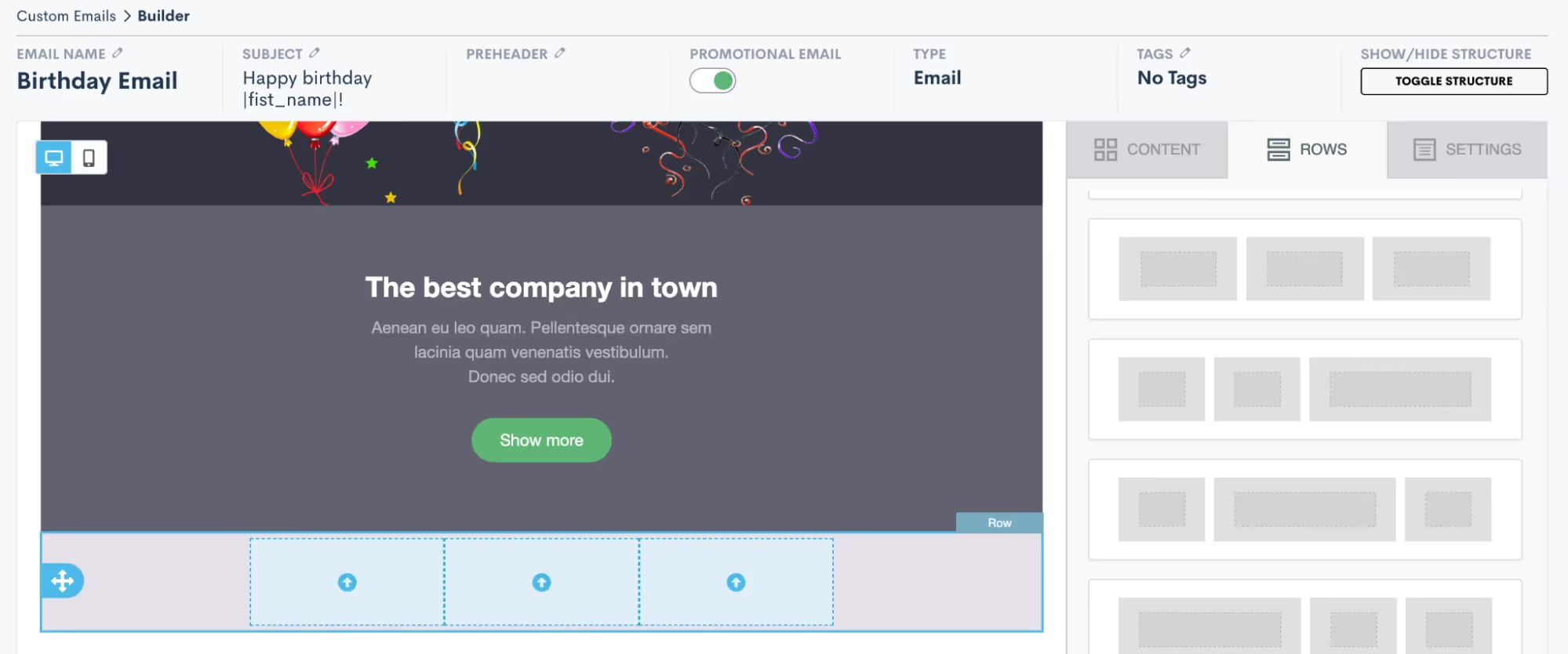
- Once you have added a row – such as the 3-column row added above – your next step is to add content into the row. Content can be anything from images, to videos, to text, to buttons, etc. Click on the Content tab over on the right side of the screen, and then drag and drop any content into your new row.
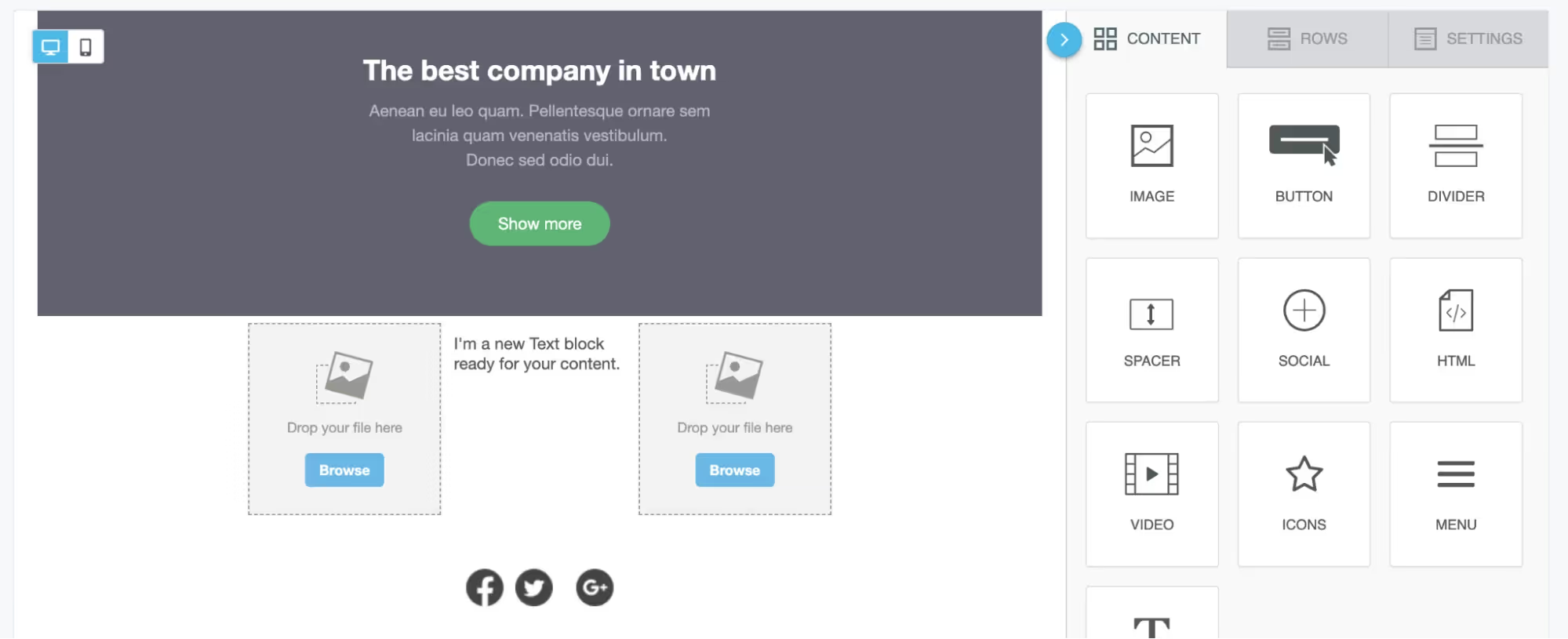
- In the image above, you can see that we have added an image, a text block, and then a second image into our 3-column row. Use the Browse button on the image content to upload your own image file or select from a variety of stock images. Similarly, click into the text box to type or paste in your text content as well as to select formatting options and merge fields as desired.

- Above you see the “first name” field has been added into a text block using the merge tags button, highlighted in red. You will see a full list of all of your fields, including custom fields, when clicking the merge tags button.
- Once you have your rows and content added into the email, you can also make other selections for email settings such as background color, layout width, etc. Click on the Settings tab on the right side of the screen to view these options.
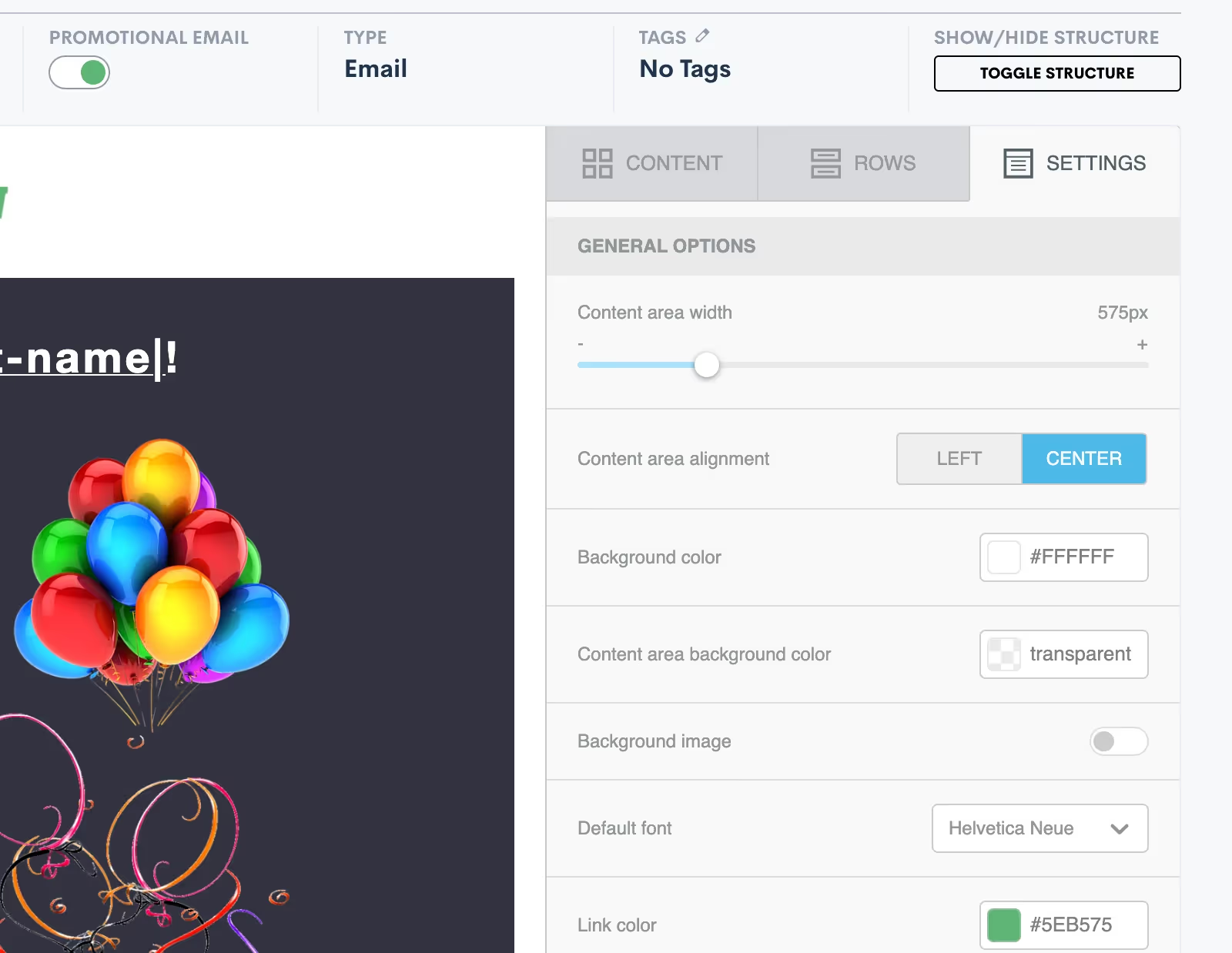
- For any of your marketing/promotional emails it is very important that you select the Promotional Email toggle button shown at the top of the image above. Activating this will add an unsubscribe link at the bottom of your email. This is legally required so that your target audience has the opportunity to opt out of future promotional emails. Anyone who clicks the unsubscribe link will no longer receive bulk (promotional) emails from you, but they still can get your one-off emails sent via Lawmatics.
- Once you are ready to save your email, notice that you have two different options: Save Email or Save As. Click Save As to enter your email title, subject line, and enter a preheader if desired.
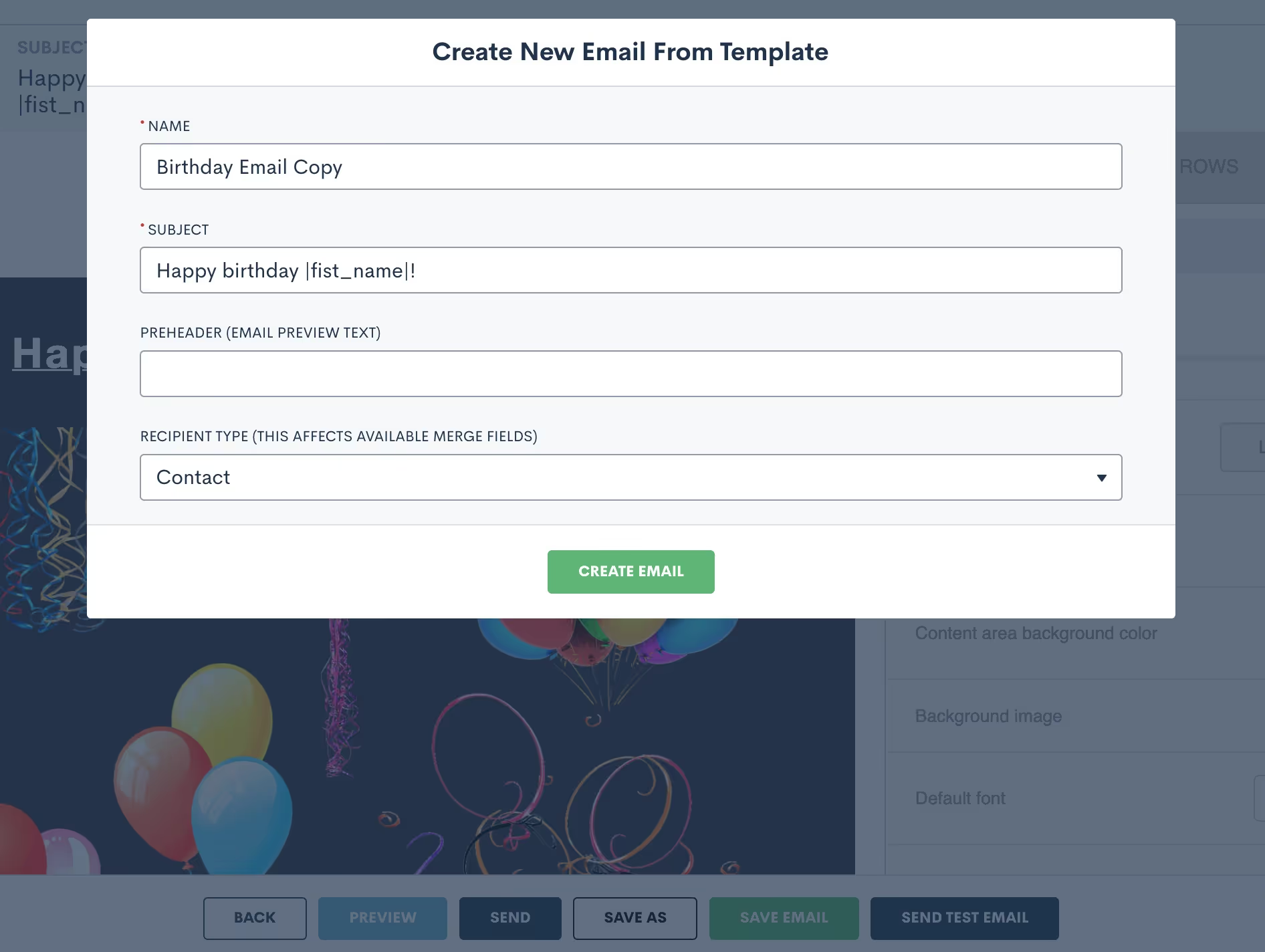
- Be sure to select the recipient type as Contact for any emails that are going to your general marketing audience. Once you have saved the email, you can always come back to make edits, updates, or “save as” to create a copy.
Create filtered target audiences
Now that you have your email content ready, your next step is to select the audience you’ll be sending the email to.
- Begin this process by selecting the Audiences option under the Marketing tab.
- Click Create New Audience and give your audience a name such as “All Contacts” or “Estate Planning Clients”, depending on the group you are targeting. For any broad marketing audiences used for sending a birthday email, holiday emails, firm newsletters, etc you will generally want to create an audience of Contacts as opposed to Matters.
- Once your audience is created, it’s time to select filters. For a broad audience of all contacts you will not add any filters, you simply want the audience to include your full list of contacts.

- For other instances, you may wish to create a more targeted audience. For example, let’s say you have an email targeted specifically for closed criminal defense cases. In this instance, you would add a filter for practice area as well as the case closed status, as shown below.
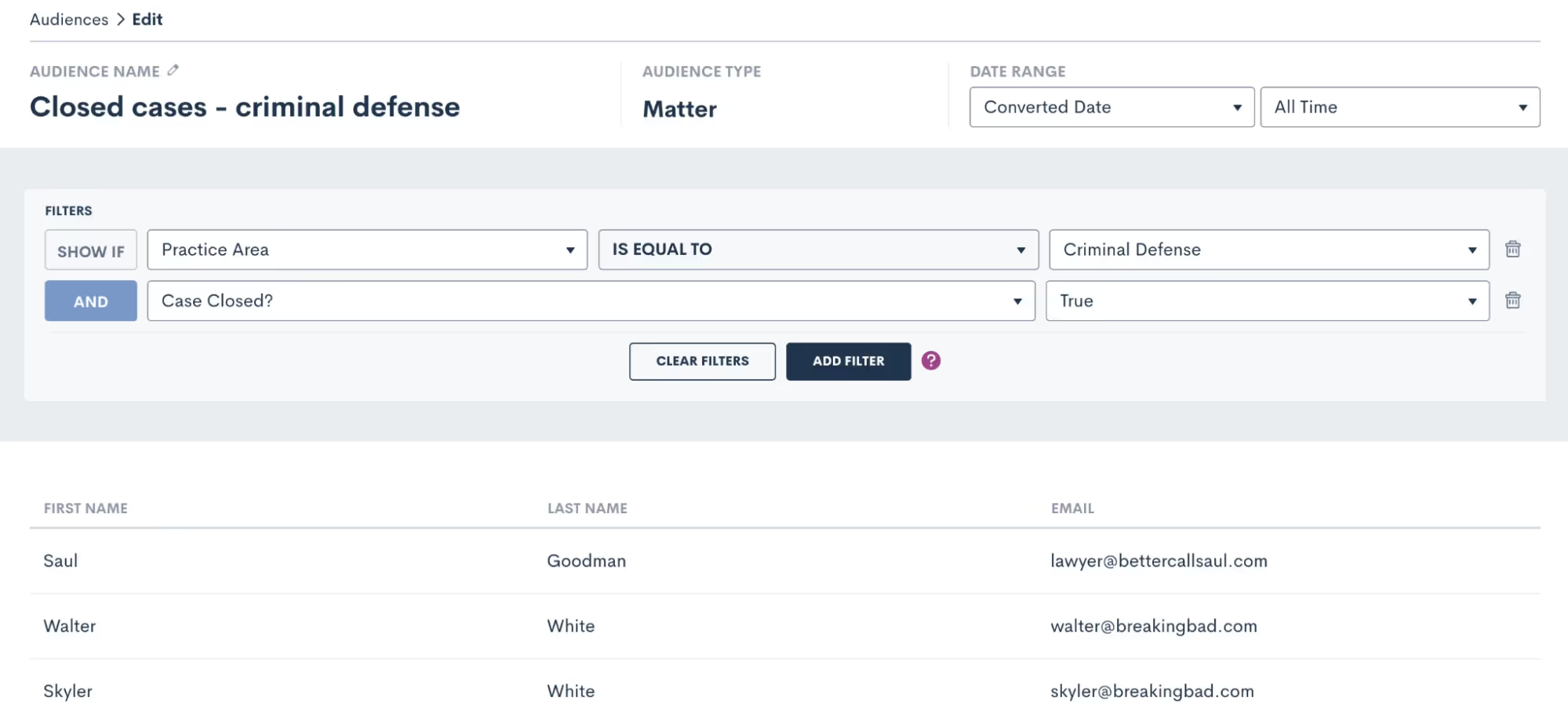
The system will filter out any contacts that don’t meet your specifications, so that you are targeting only those who do meet them in this particular audience.
Send emails with campaigns
You now have your email content created as well as the audience you wish to send the email to, it’s time to send the email! Select Campaigns under the Marketing tab and then click Add New Campaign. There are three different kinds of email campaigns you can create, you’ll see those options at the bottom of the pop up. Let’s run through each of them.
Run once
Run Once will likely be your most commonly used campaign type since you will use it for holiday emails, newsletters, and general one-off announcements or promotions. Think of this campaign as your option for “email blasts”.
- For any campaign type you select, you will first need to enter a campaign name, select your email template, audience list, and select which of your firm users (or the firm email) the email should send from.
- Once you select Run Once as the type, you will be prompted to select when to run the campaign. When Manual Activation is selected, it will be up to you to activate the campaign whenever you would like to actually send the email.
- If you wish to add more automation to this campaign, you can opt to run the campaign on a specific date.
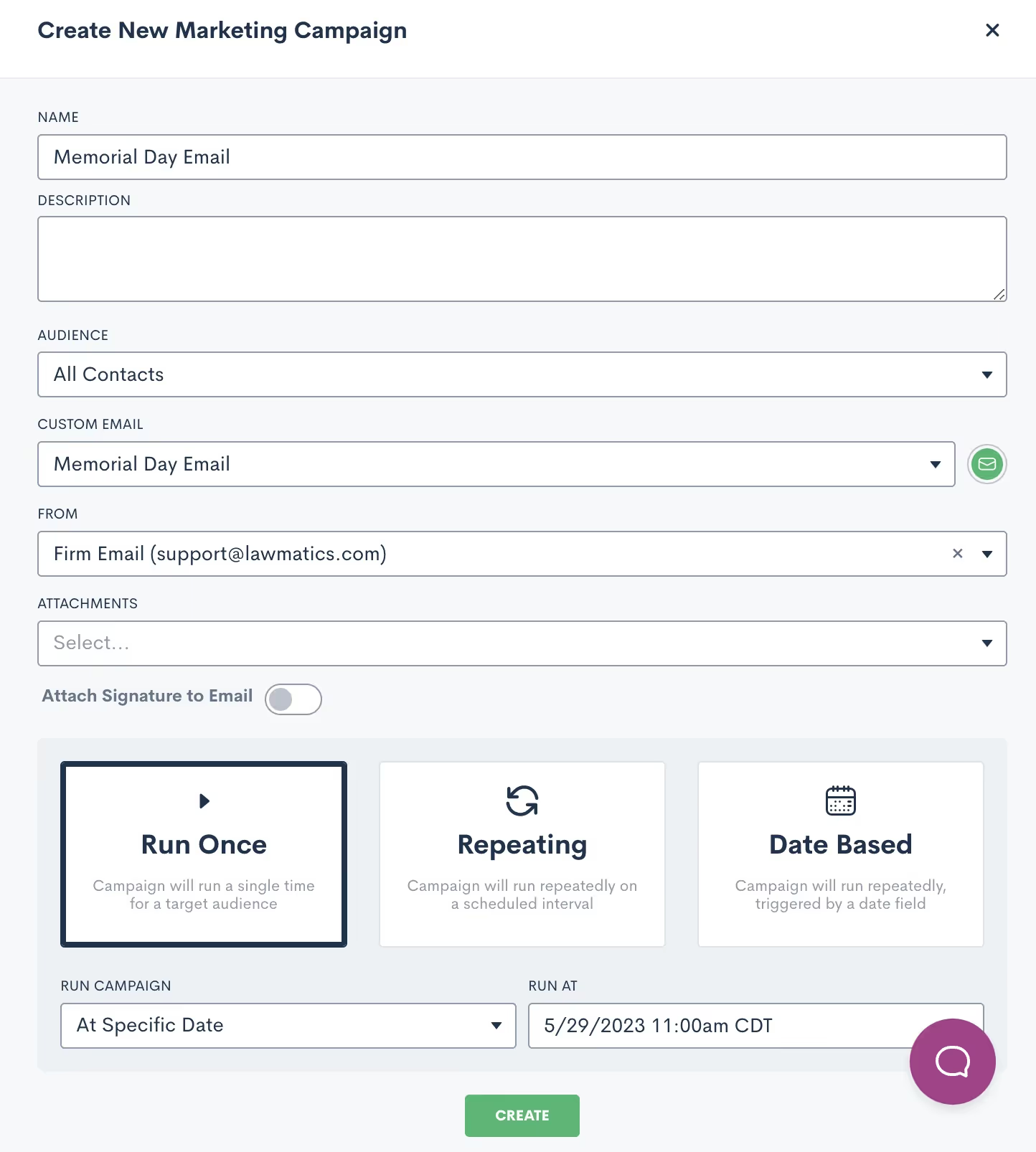
- When this option is selected, you will not need to manually activate the campaign to send the email. Rather, the email will be sent automatically at the date and time that you have selected on the calendar. All you need to do is hit the Create button, and then the email sends automatically on the correct day.
Repeating
The key thing to remember when creating a Repeating email campaign is that the same email template will be sent on a repeating interval. With that being said, this does not work for newsletters or holidays, since those emails will be different each time.Repeating campaigns allow you to create a custom schedule for sending a particular email on a recurring basis. When you select Repeating, you will be able to set the custom schedule for the campaign.
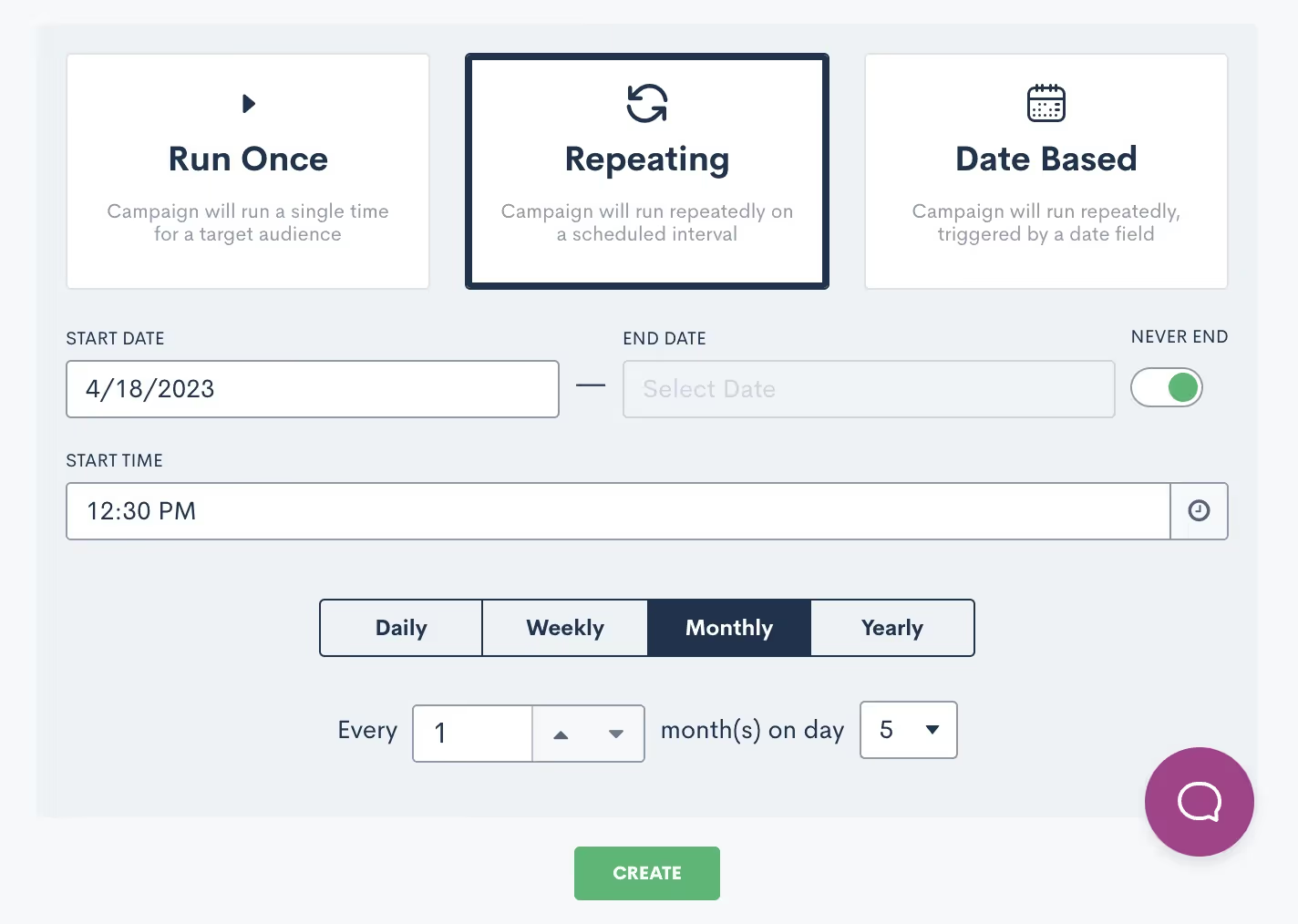
Date based
Finally, Date Based campaigns are your method for sending out birthday or anniversary emails on a particular date that is unique to each contact.
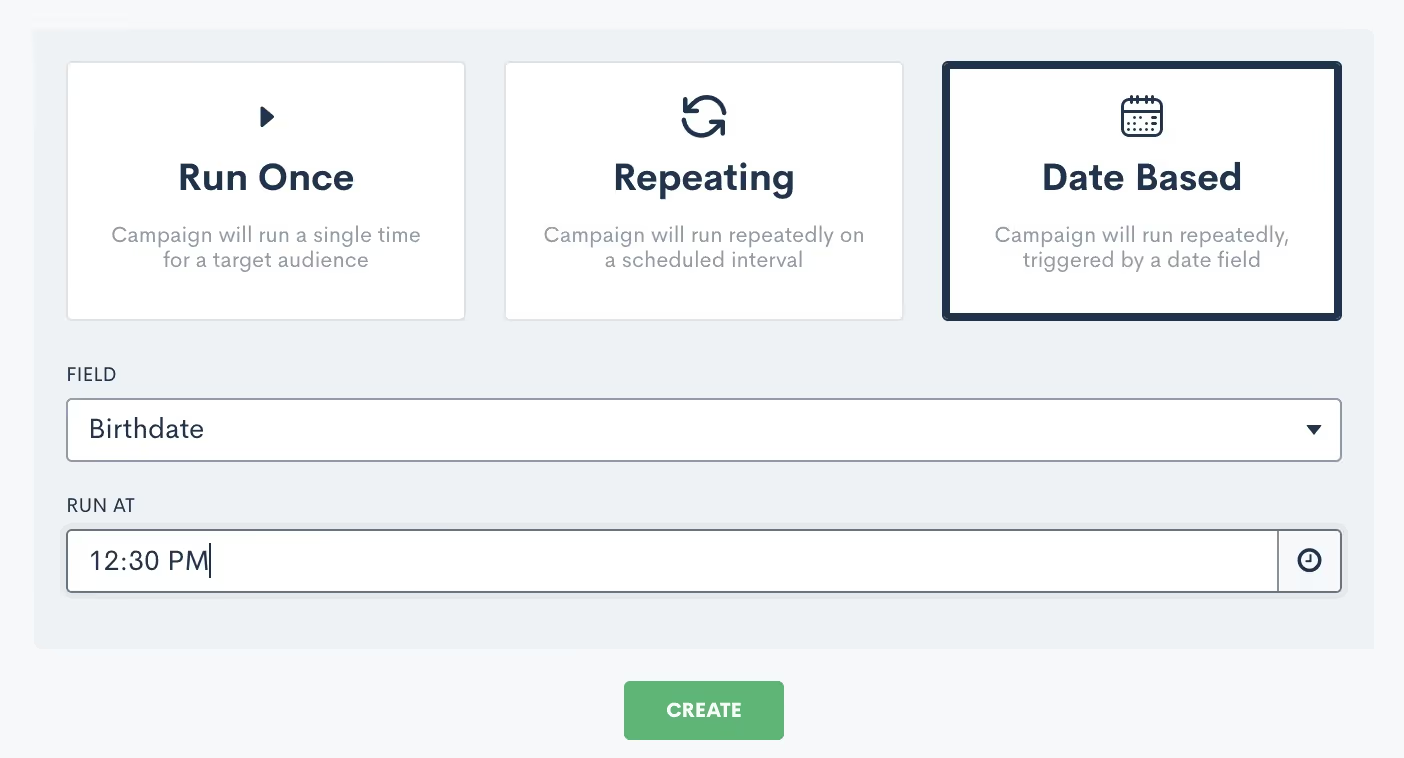
After you select Date Based, you will need to select which field should be used for the date for this campaign, I’ve selected Birthdate above. You will be able to select from any date type fields in your CRM, including custom fields. Note that if you have selected an audience of contacts, as opposed to matters, you will not be able to select a matter field as the date field for this campaign.Once the campaign is active, it will start sending the email on the appropriate date for each individual at the specific time you have selected.
Track campaign performance
One of the main reasons to use an email campaign to send out your firm's marketing emails is to track the performance of each campaign. This includes bounces, opens, and clicks. To view the stats for an email campaign simply click on the name of the campaign to open up the campaign details. You will then see a page similar to the one shown below.

For run once email campaigns you will be able to view your stats as soon as the campaign has been activated and the email has been sent. This could be from manual activation or from a scheduled send. If you check the stats immediately after the email is sent, you will get a good indication of the delivery/bounce rate, but keep in mind that the additional stats like opens and clicks will be logged over time as the recipients open or click on any links in the email. With repeating campaigns, keep in mind that your stats will not necessarily appear as soon as you activate the campaign, since these campaigns will be running on a specific interval over a period of time. Also remember that with this type of campaign, you may see the same contacts listed several times in the stats, since they are receiving the email repeatedly.With date based campaigns, you will generally see the stats slowly tick up after you have activated the campaign. By definition, your recipients in this type of campaign will only receive the email once a year on the appropriate date for them, so as time passes more recipients will have received their email. When it comes to emails bouncing, you may choose to be notified of email bounces in the platform so that you can be sure to correct an invalid email when possible. To enable this notification go to the Notifications page in settings, then choose either the Email Bounced option to be notified of all bounces, or the only mine option to only be notified of bounces on an email sent from you.
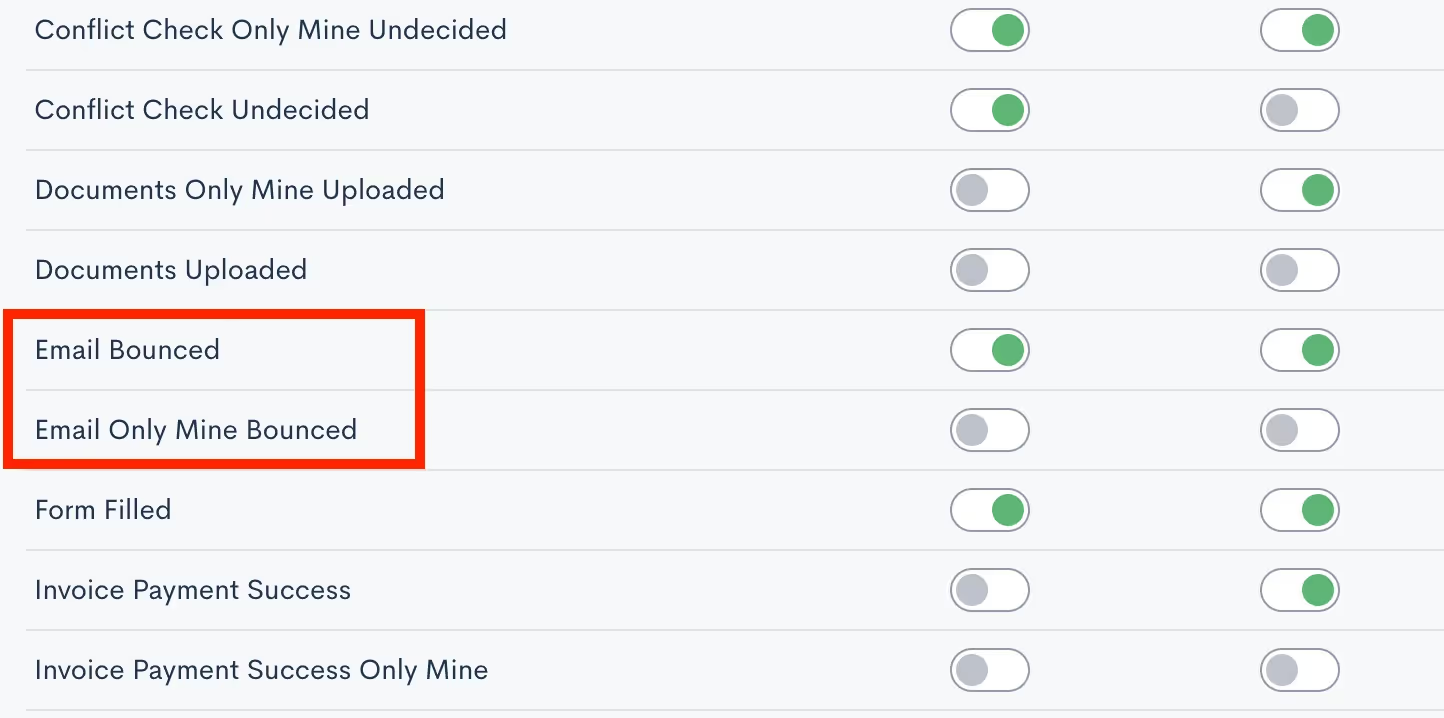
Now that you know how to access your campaign stats, it’s important to take the next step of analyzing and interpreting these metrics to make informed decisions for future campaigns. Pay attention to the time of day the email was sent, the specific filters on your audience list, and the type of content in the email to see what generates the highest engagement rate.As you discover what works and what doesn’t, feel free to incorporate those findings into your future email campaigns for improved engagement and overall results!
Conclusion
Promotional email marketing is a great way to keep your firm top of mind among your target audience. With Lawmatics, you’ll find that you can implement professional-seeming email campaigns with no additional financial investment and very extra little time investment.Lawmatics has also taken things a step further and provided you with the ability to monitor and track all of your email campaigns. Without the ability to track your marketing efforts, you’ll never know which ones to invest further in or which ones to ease off of. This feature alone is one of the many things that distinguishes Lawmatics from many of your other options.Say goodbye to piecemealing multiple marketing softwares and setting up complicated zaps and integrations. Lawmatics has everything you need to master promotional marketing all in one platform.
Subscribe to get our best content in your inbox
Ready to grow your law firm with Lawmatics?
Schedule a demo of legal’s most trusted growth platform.





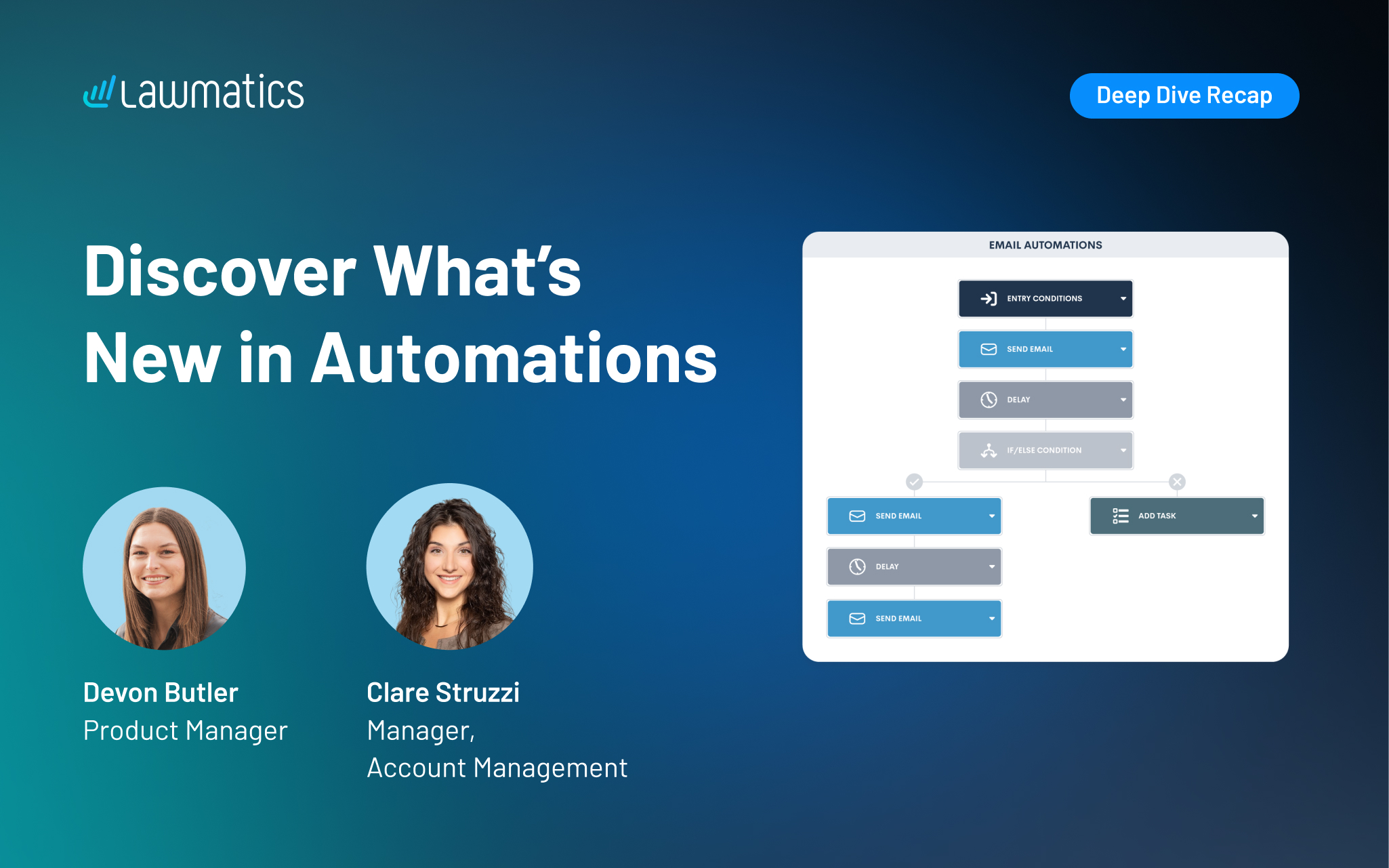


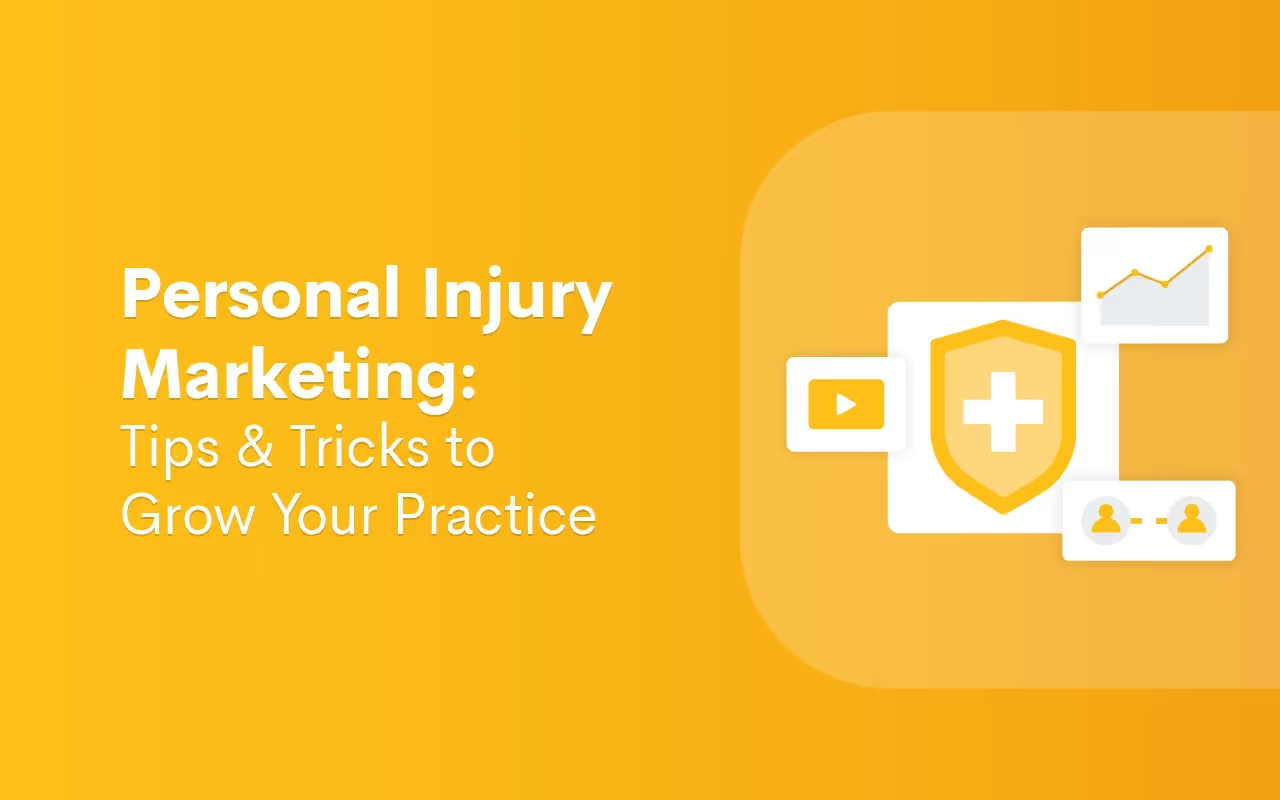
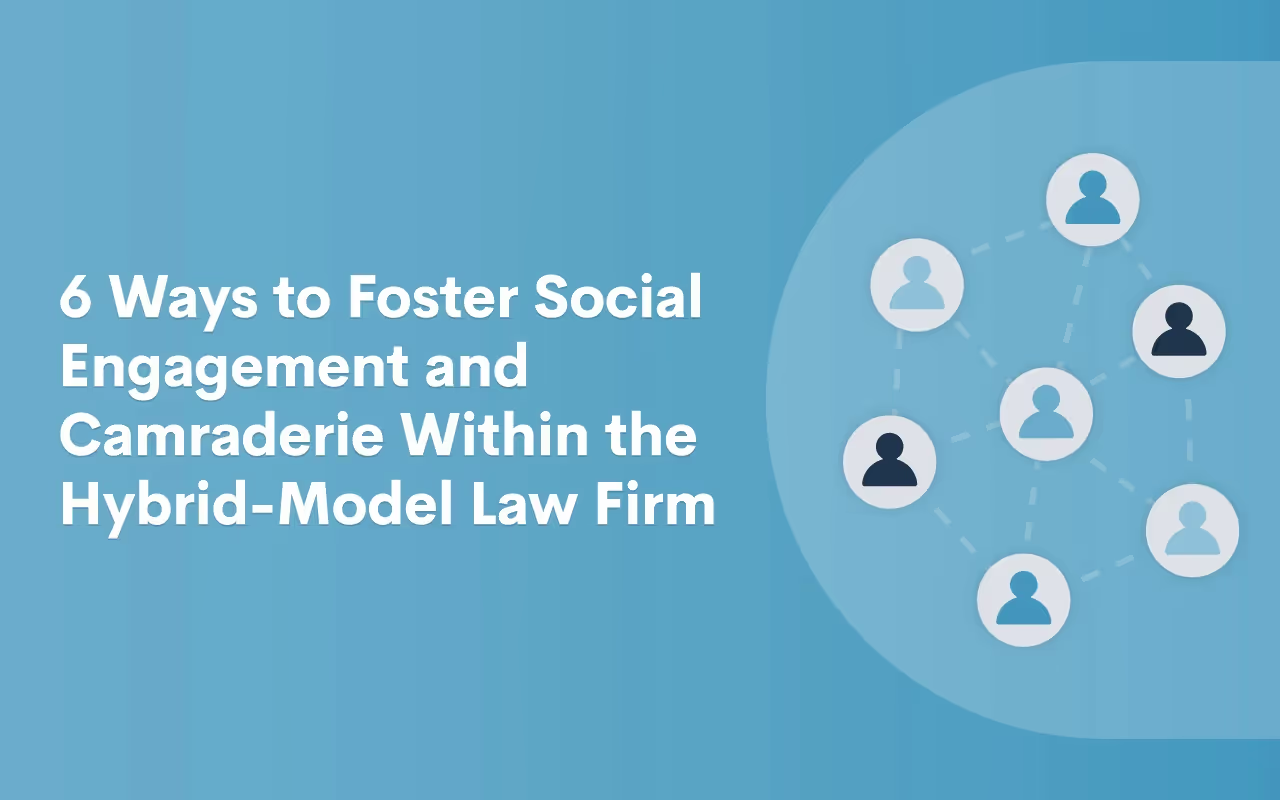
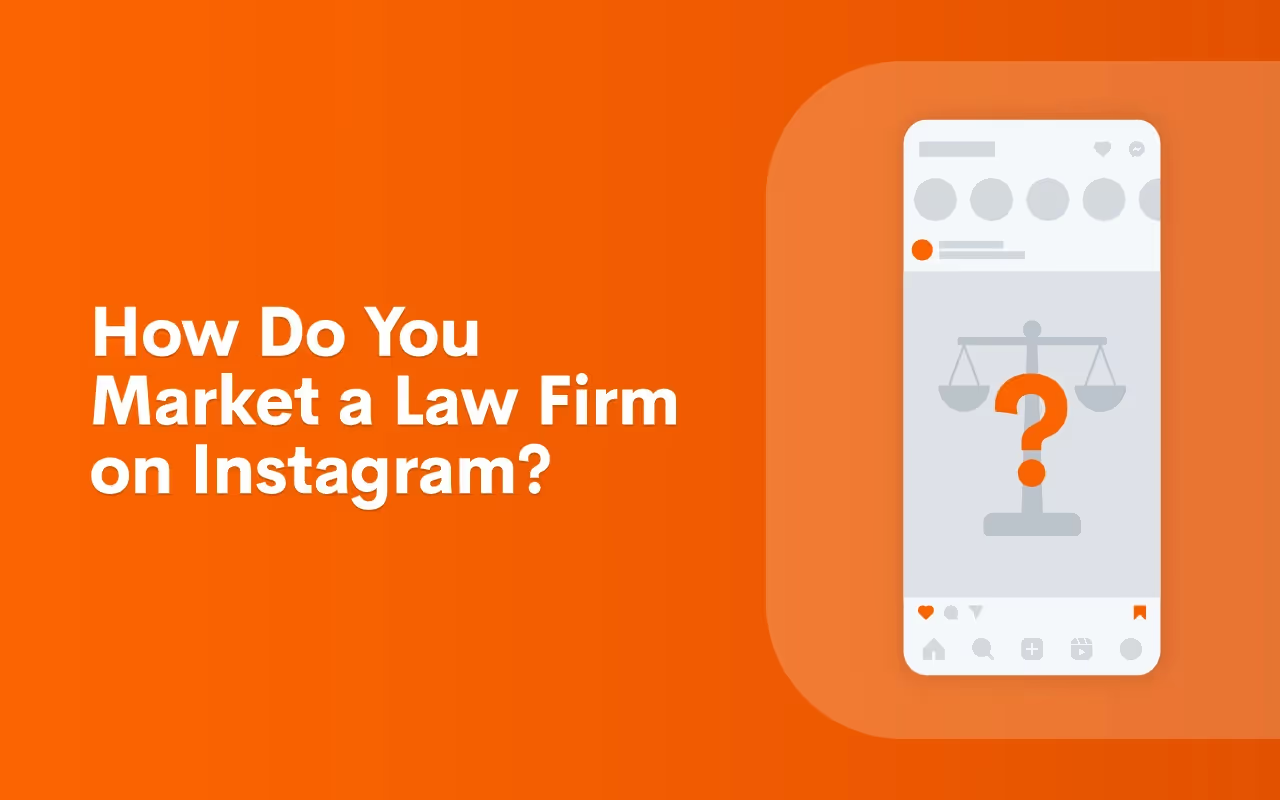
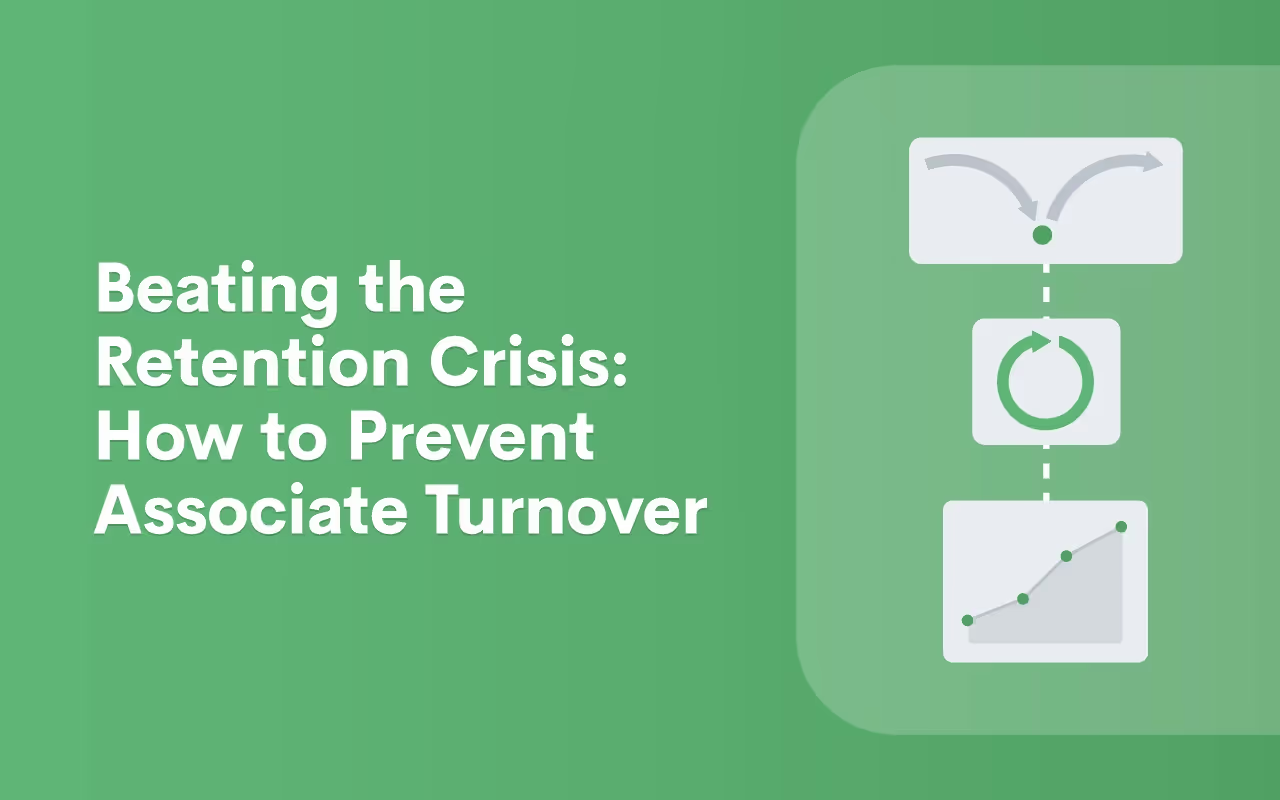
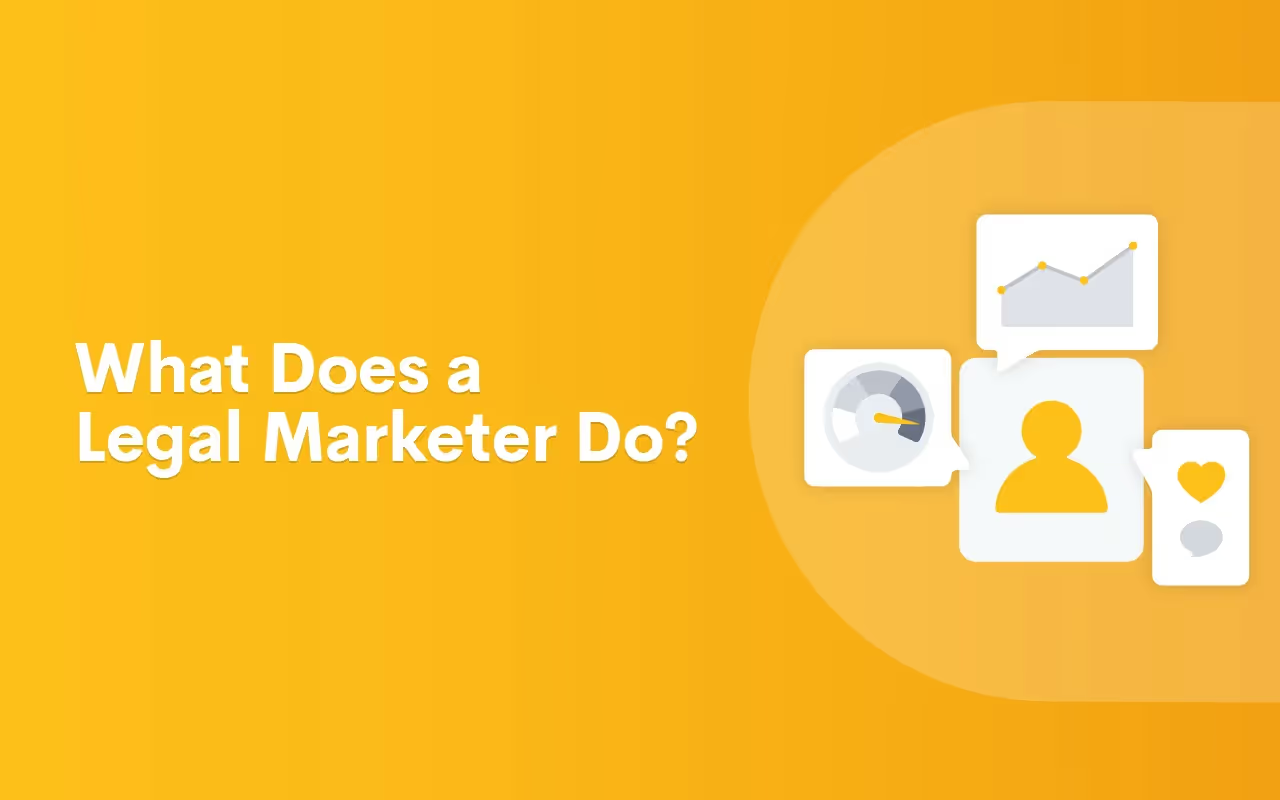
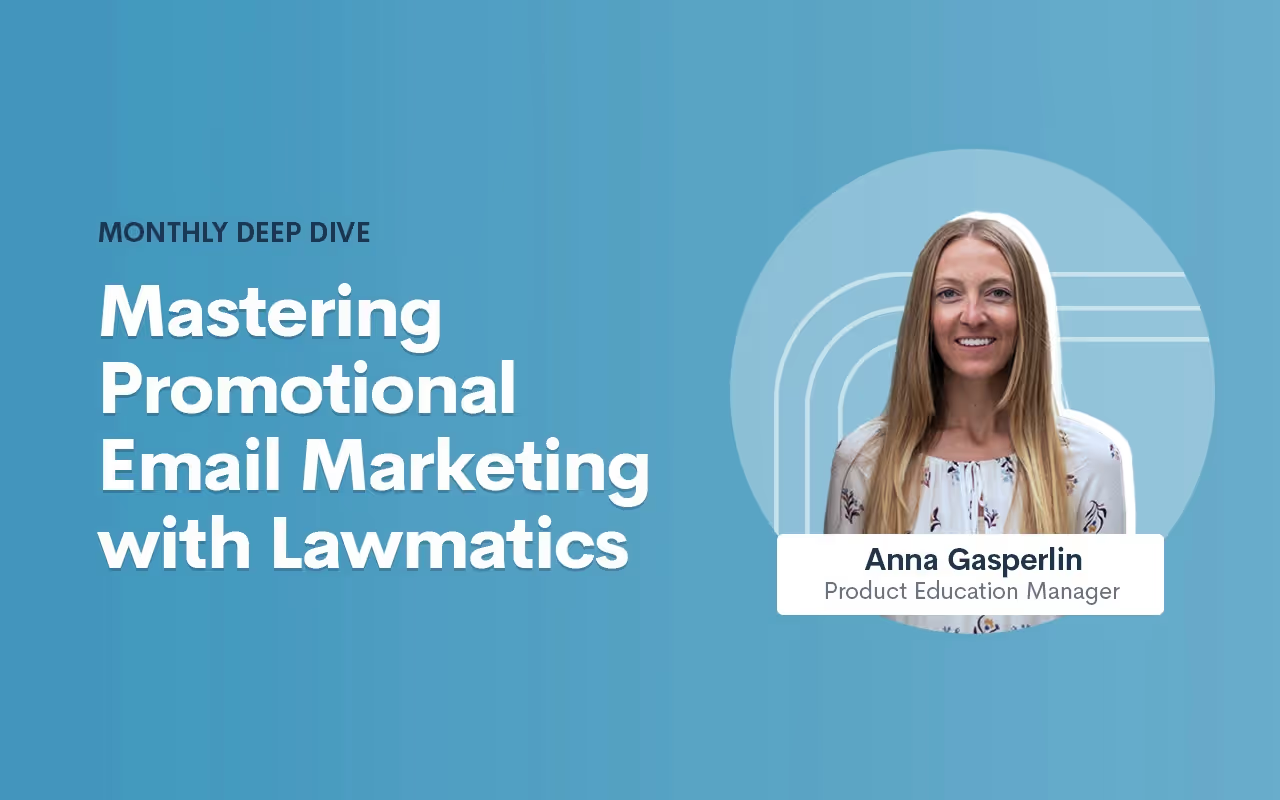
.avif)
.avif)

.avif)
